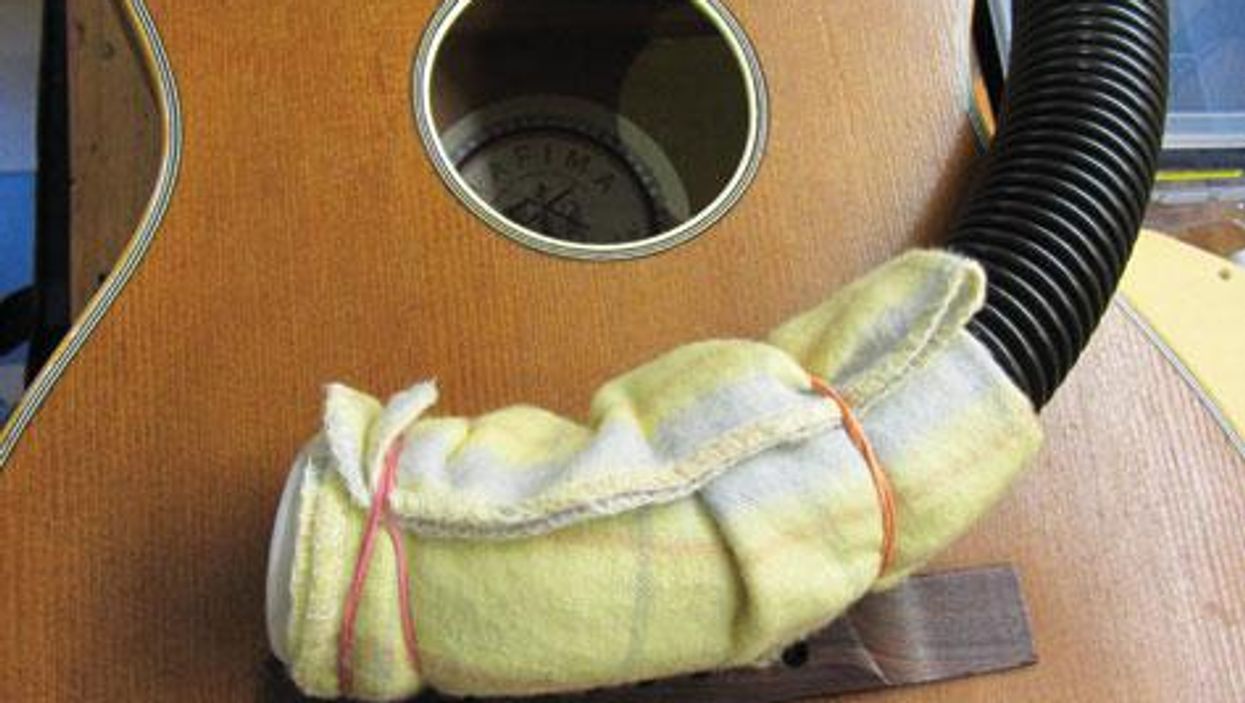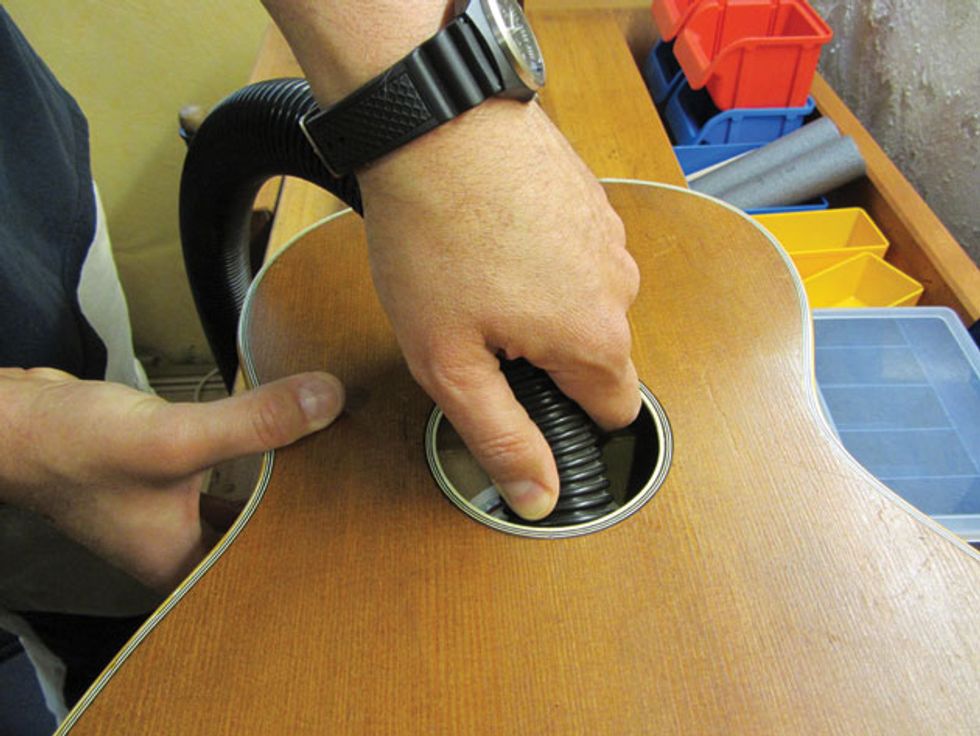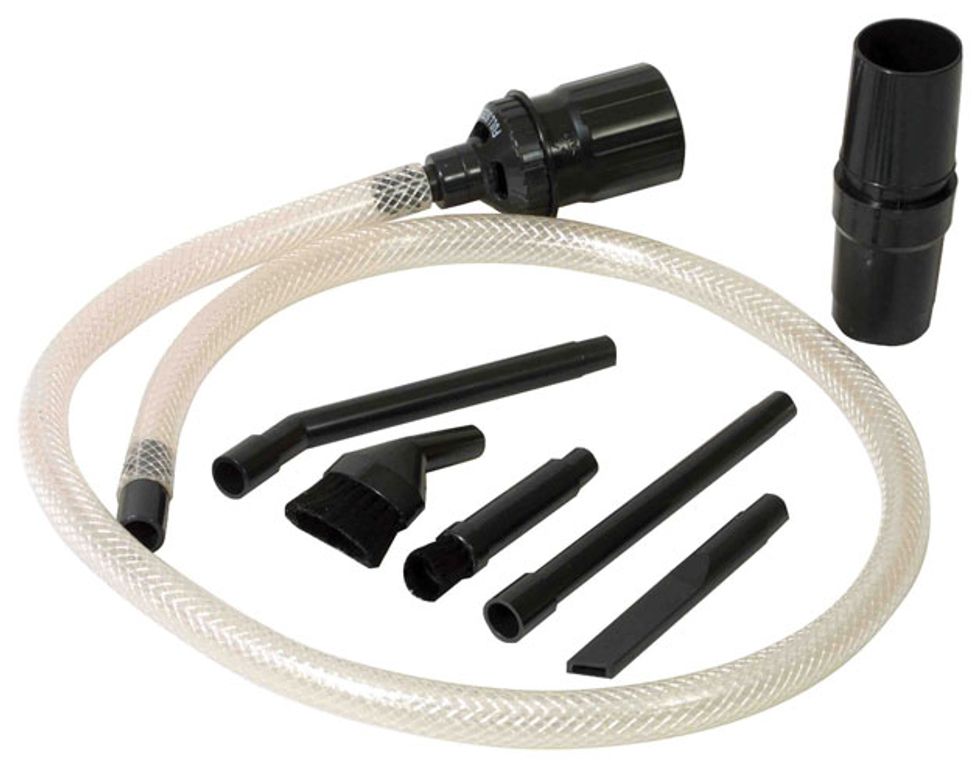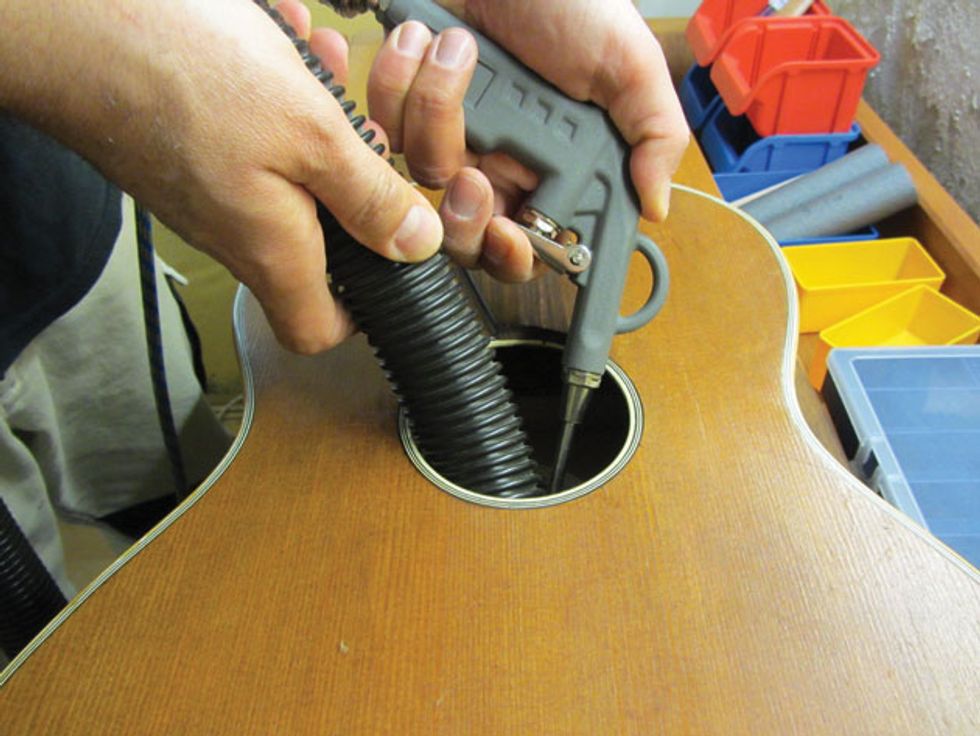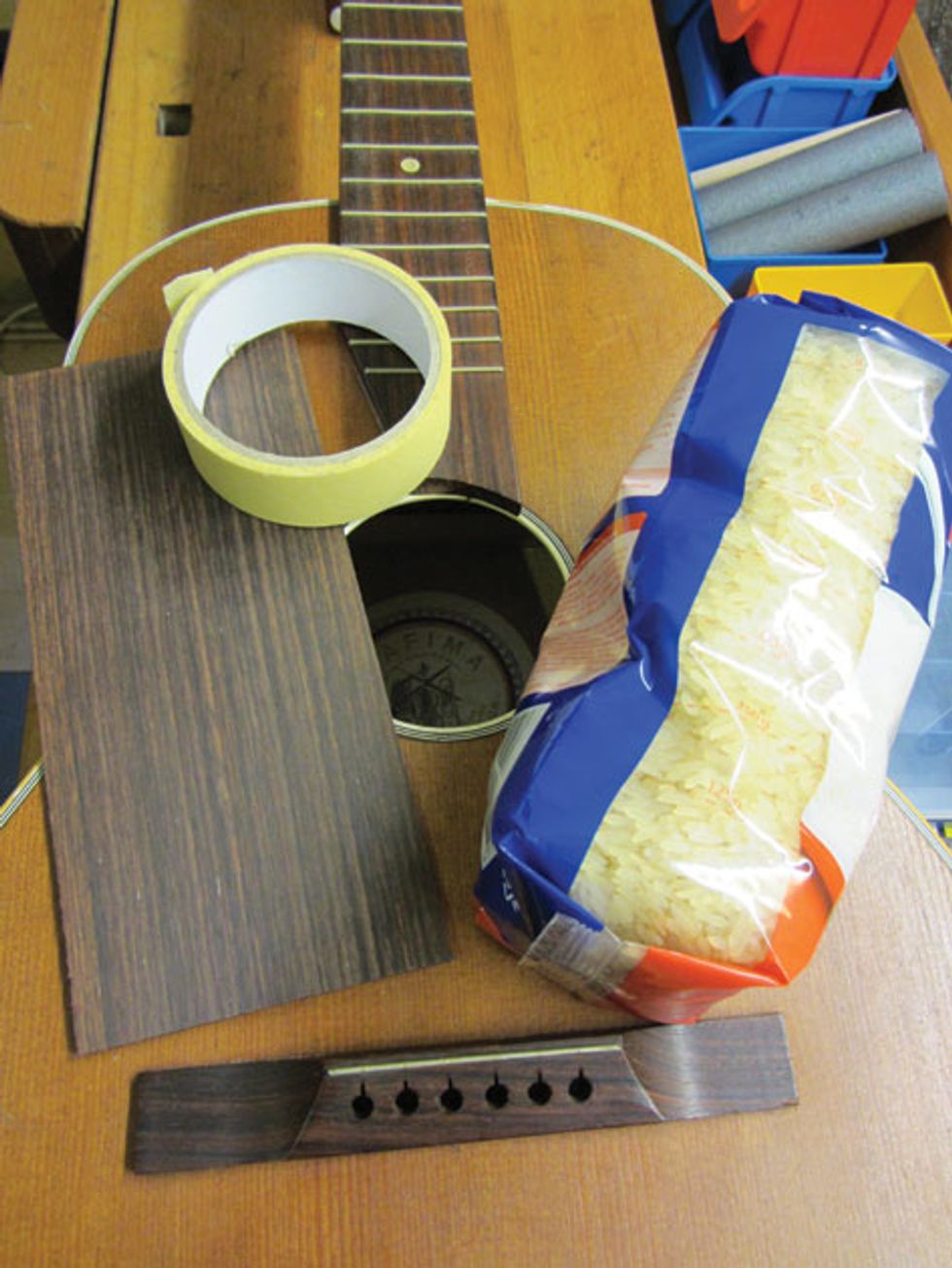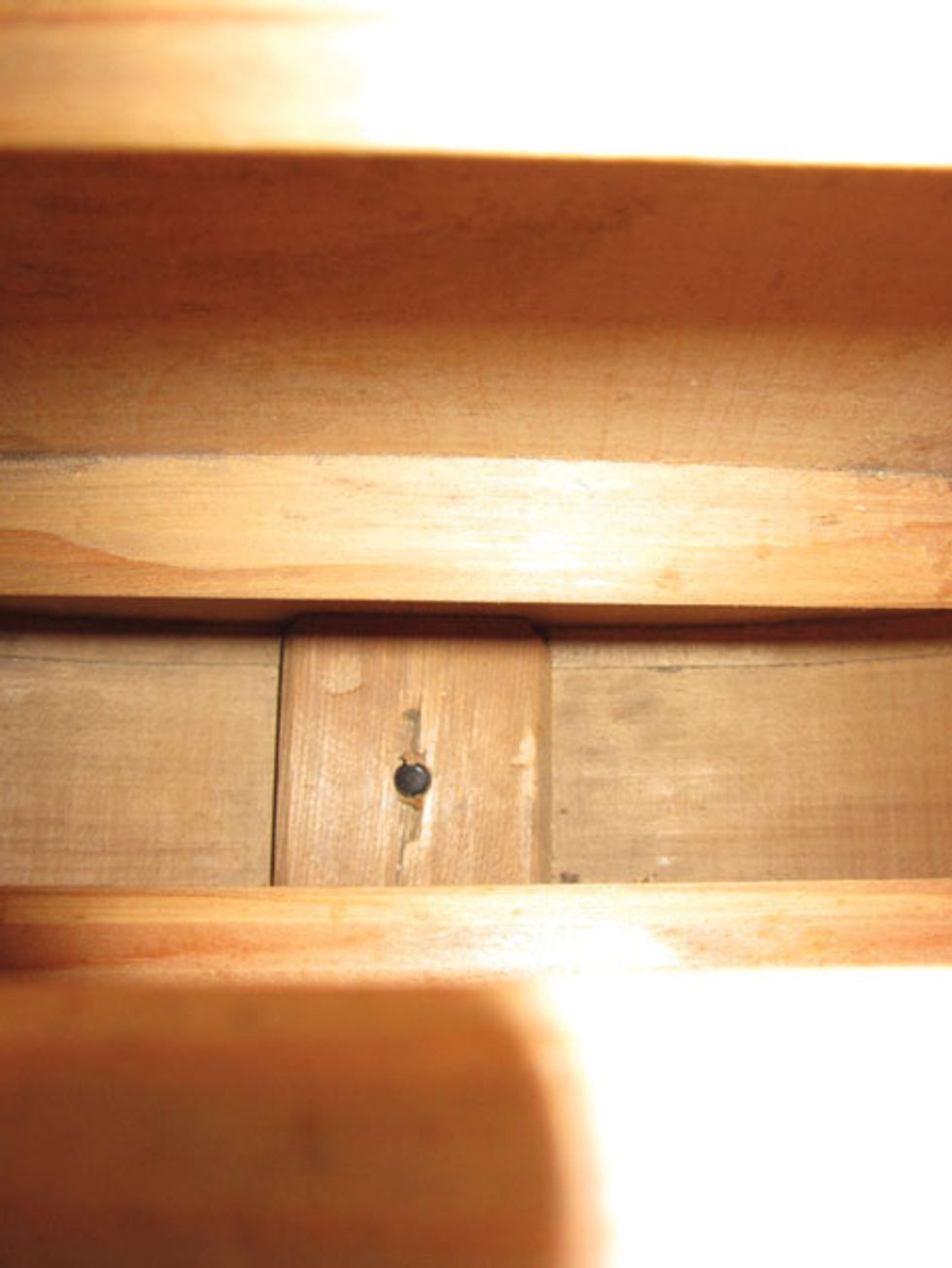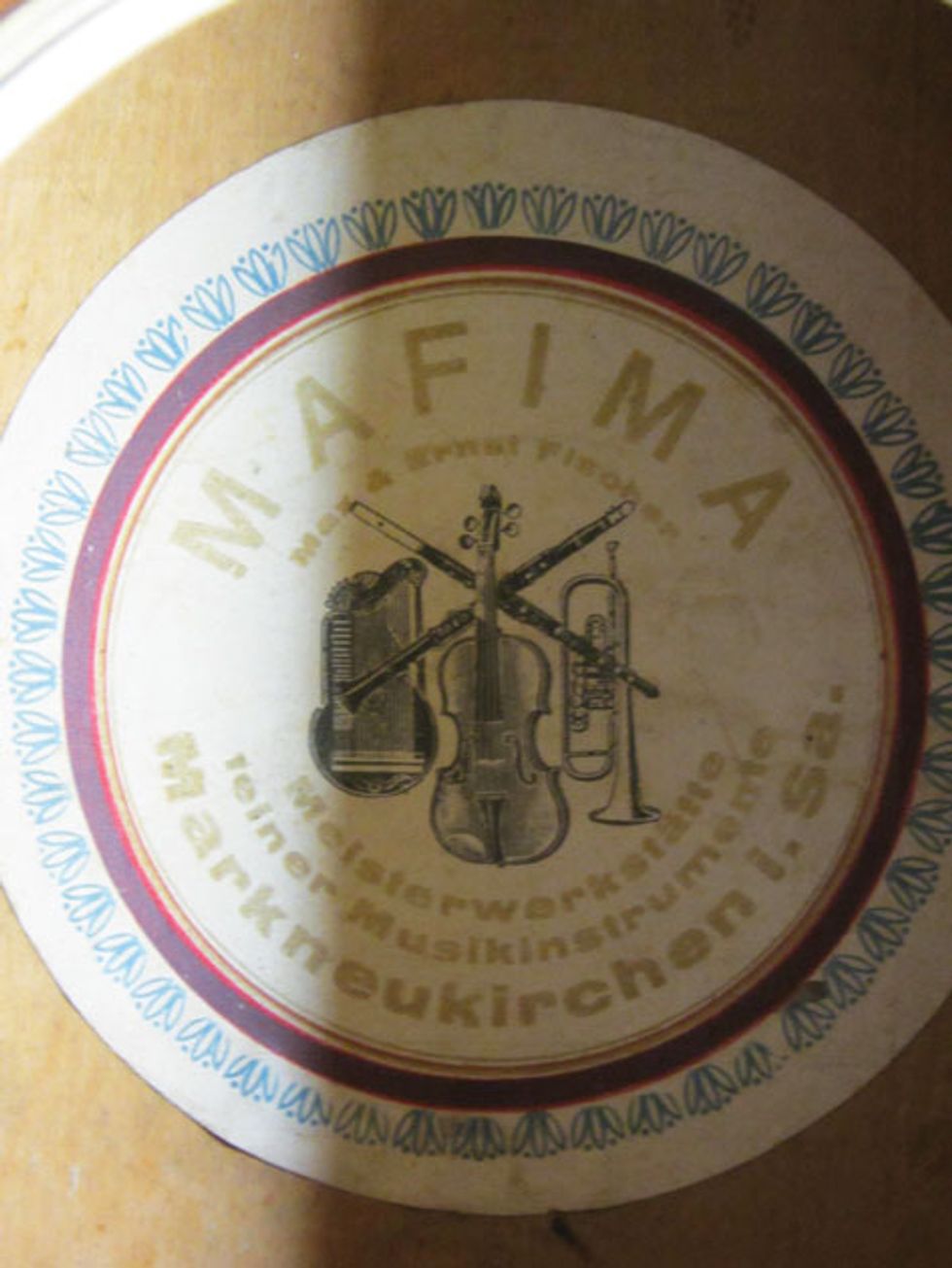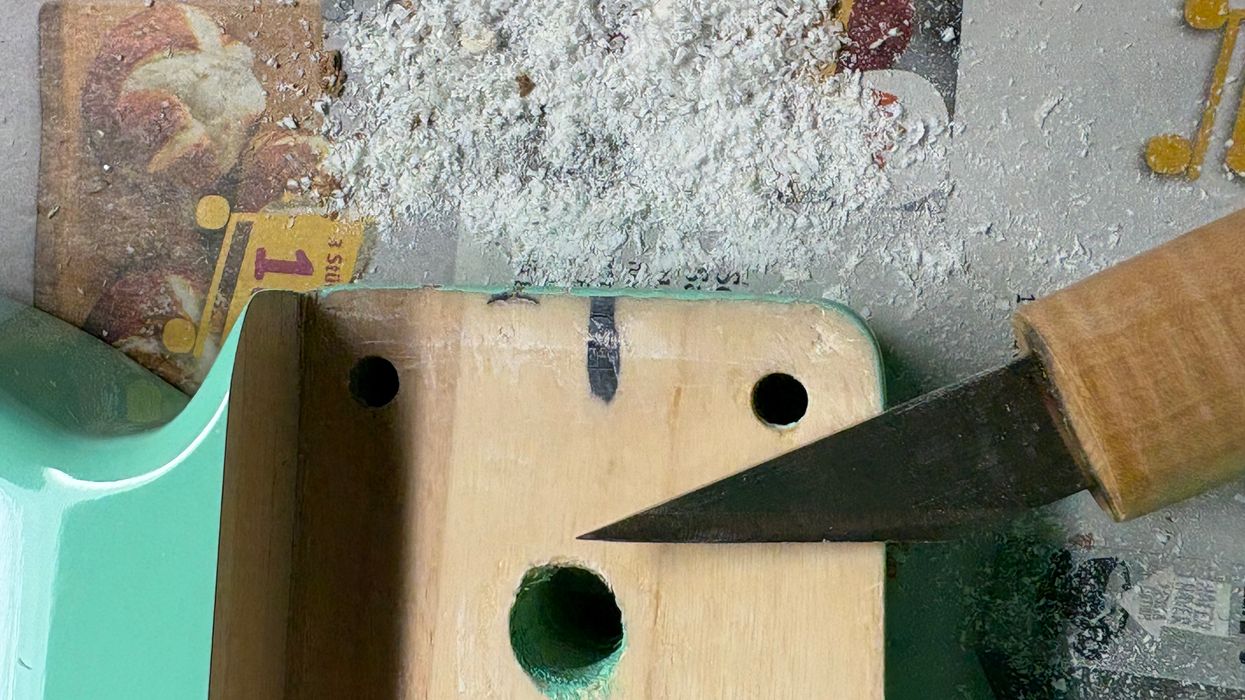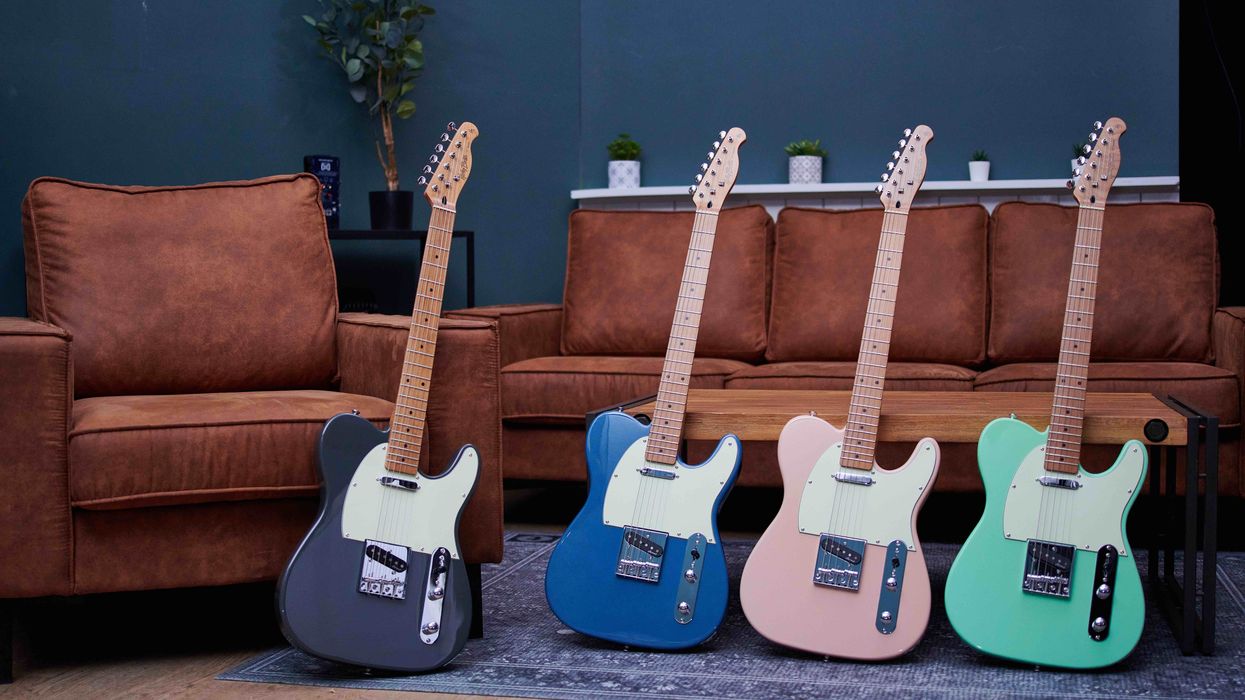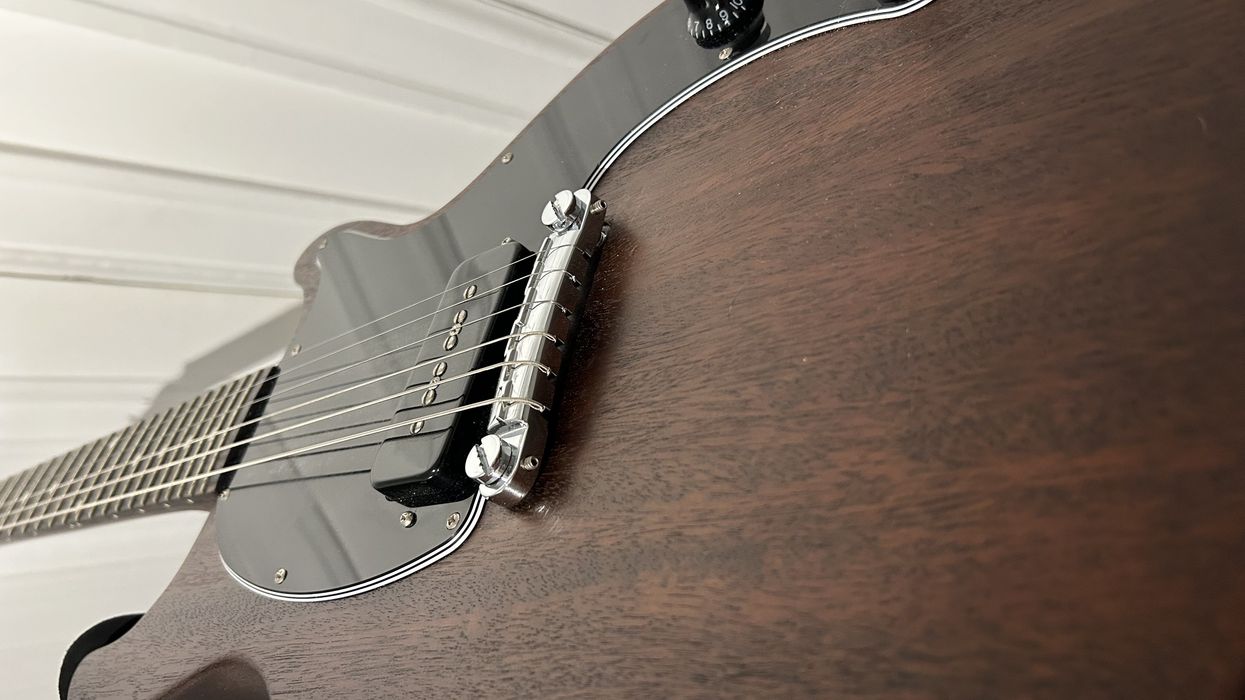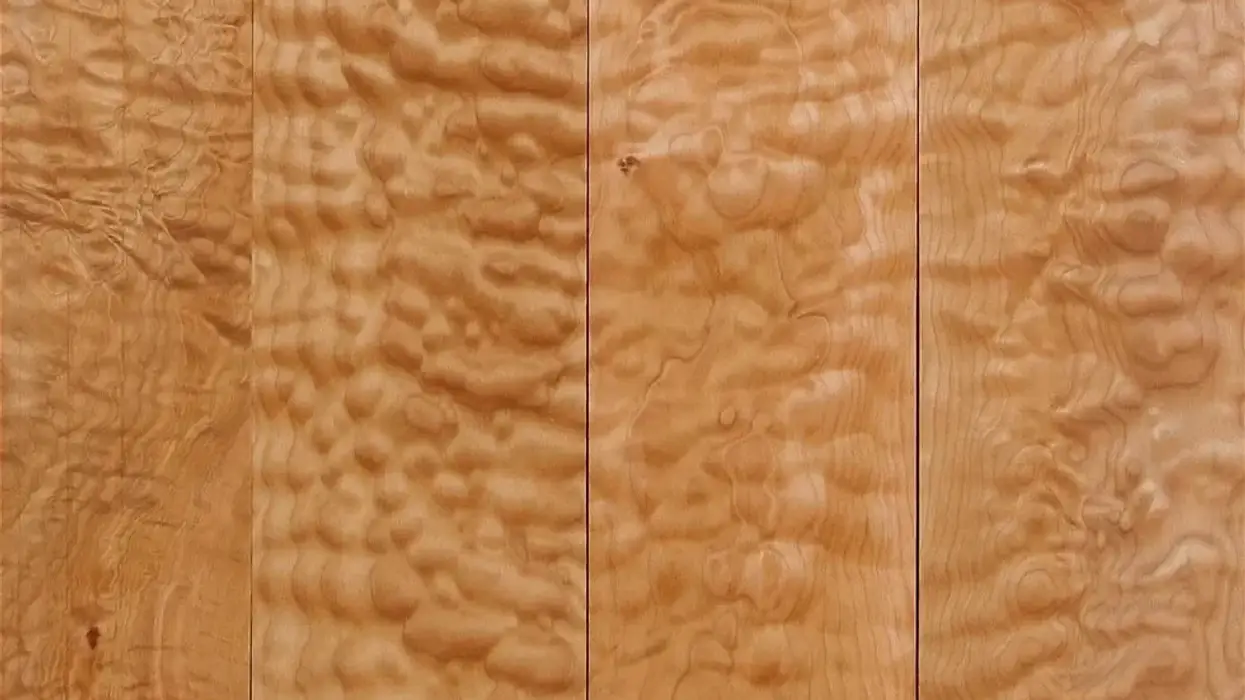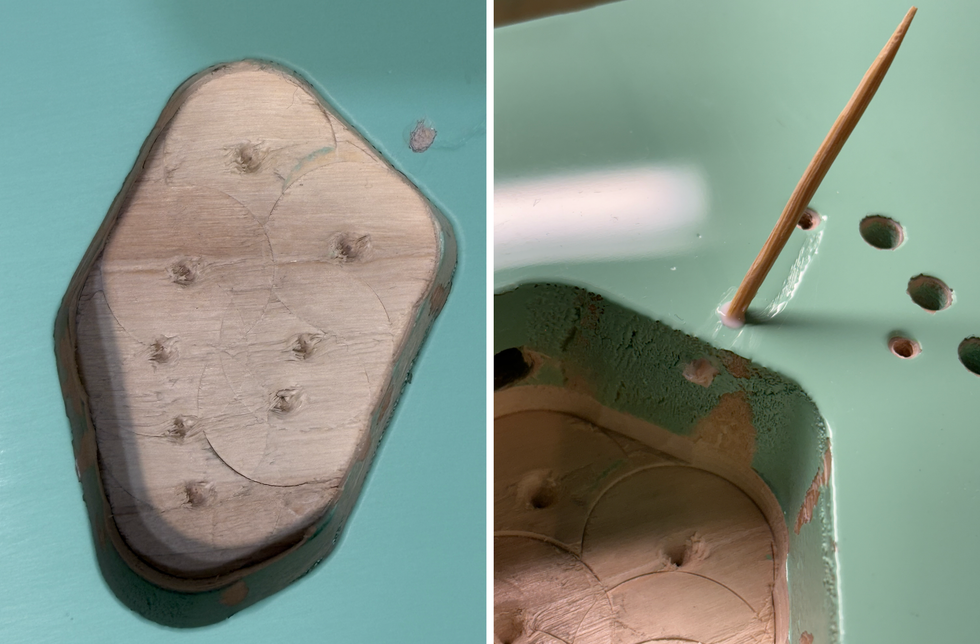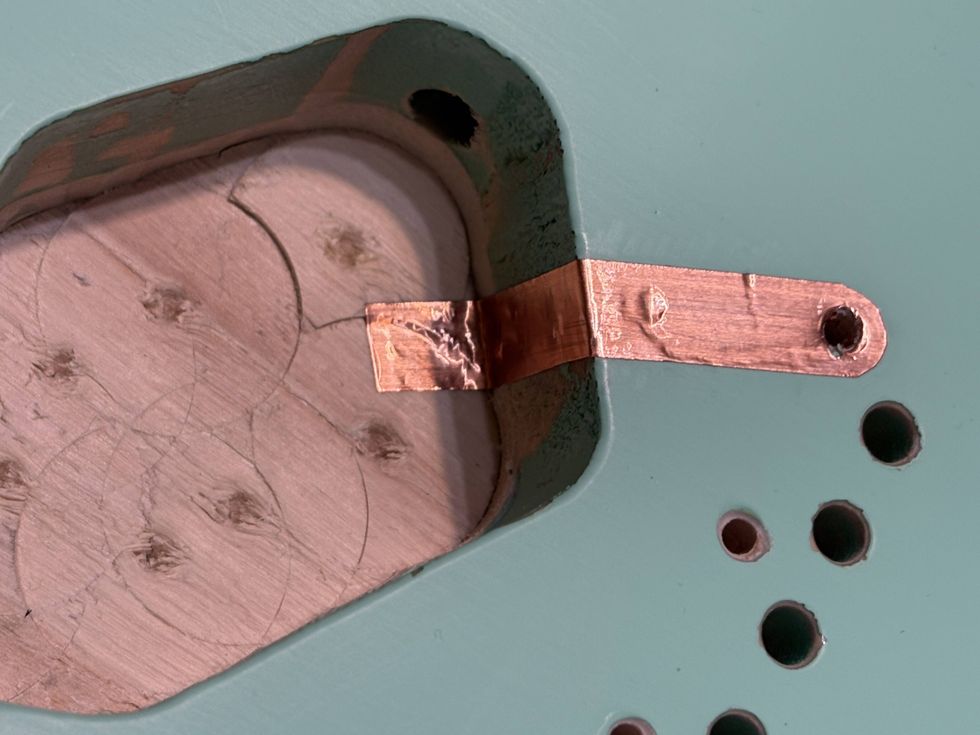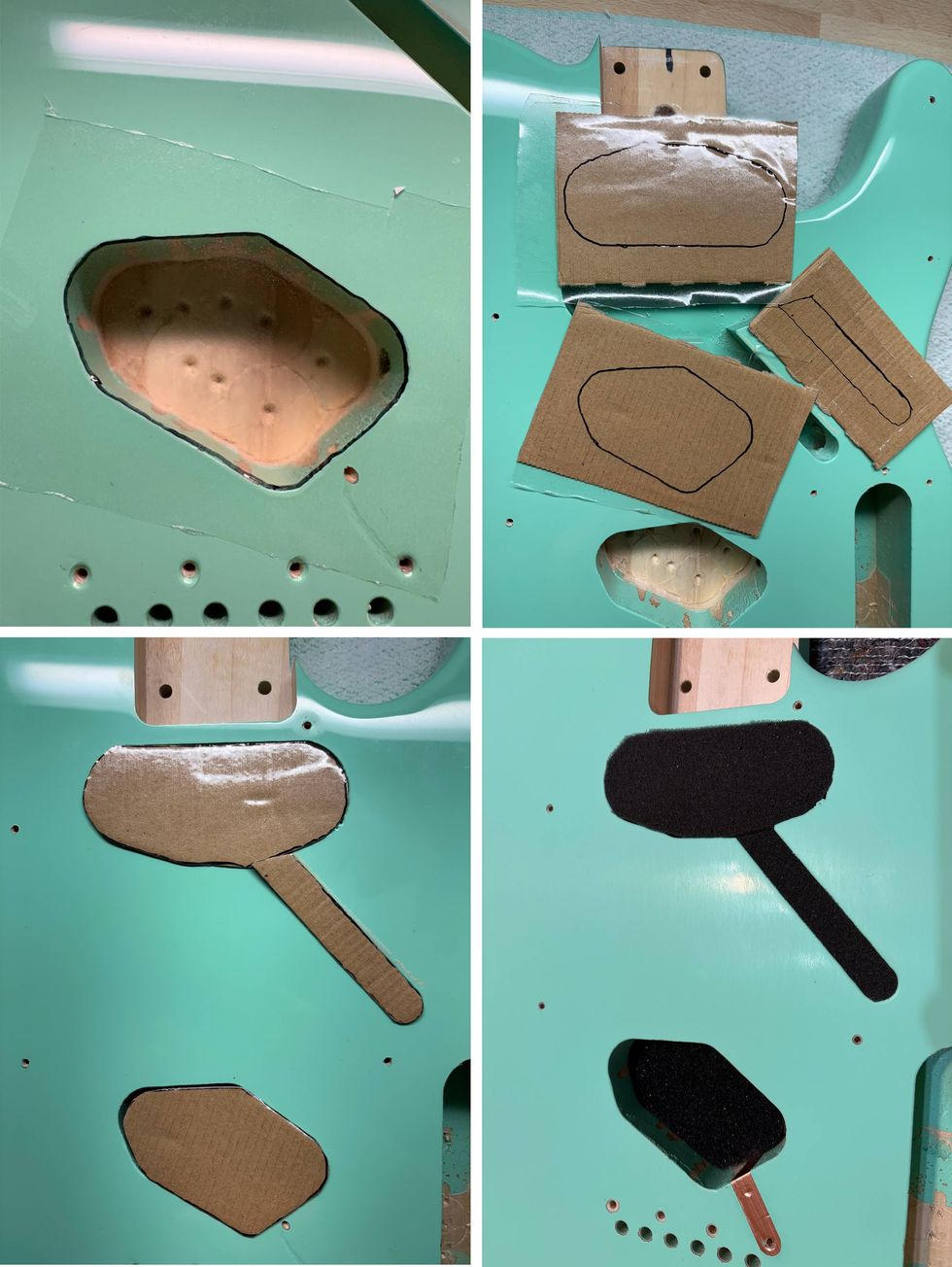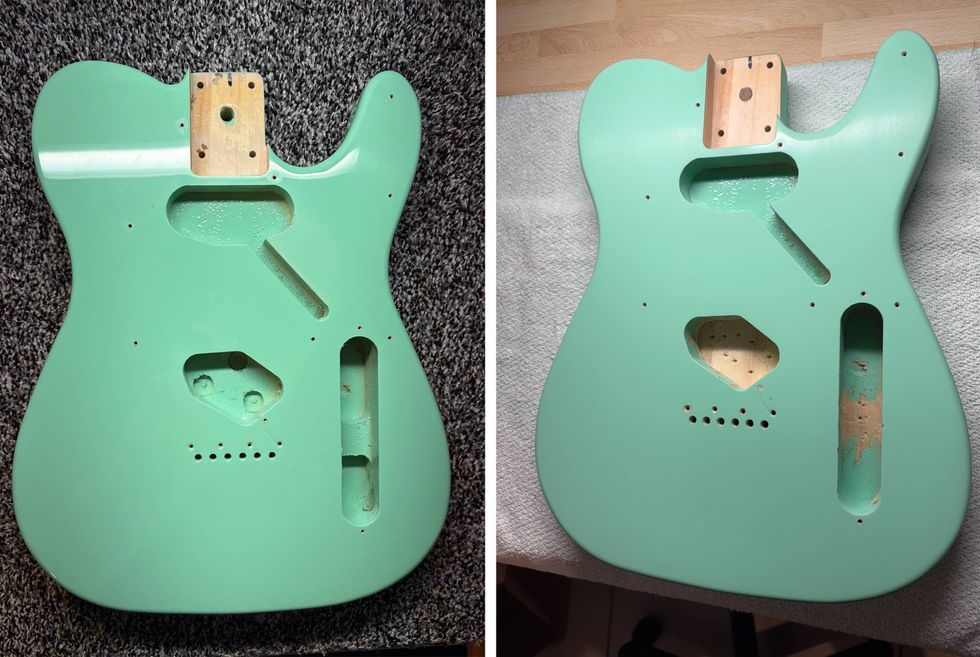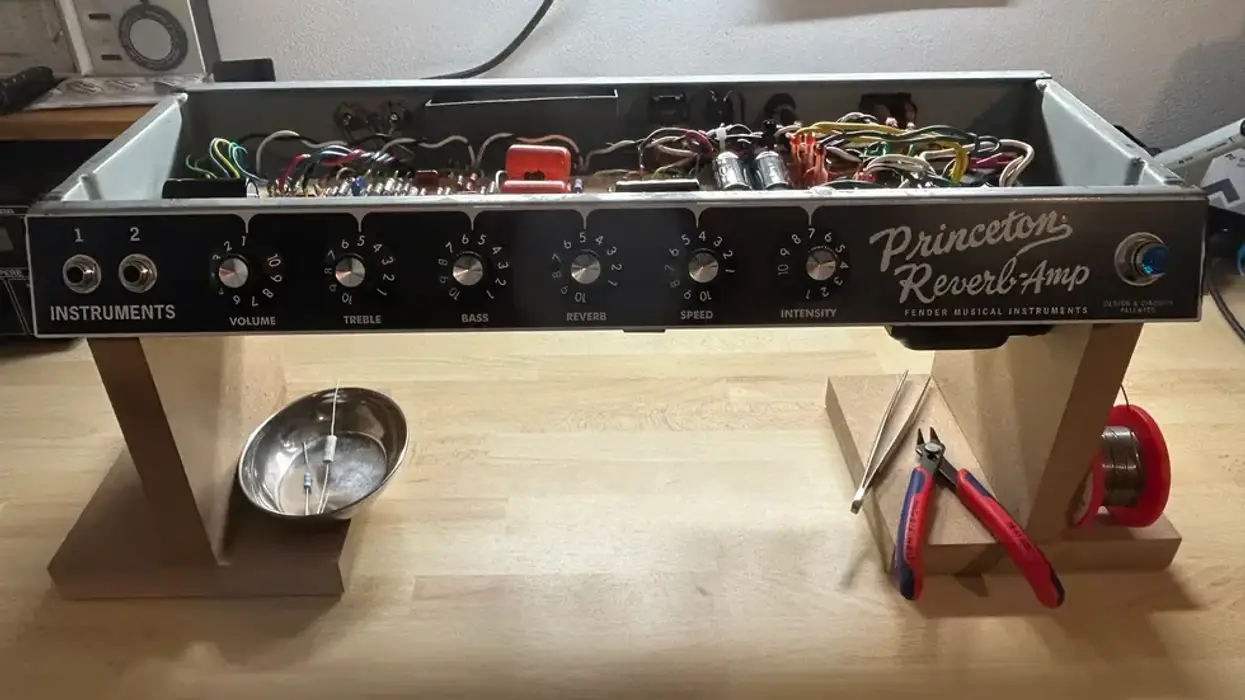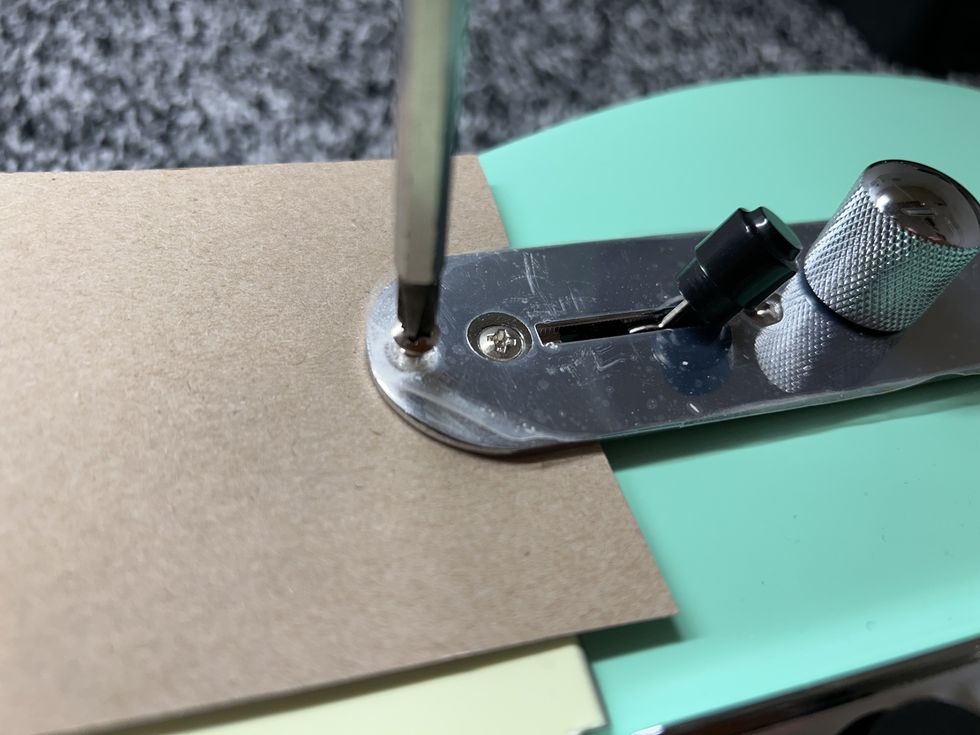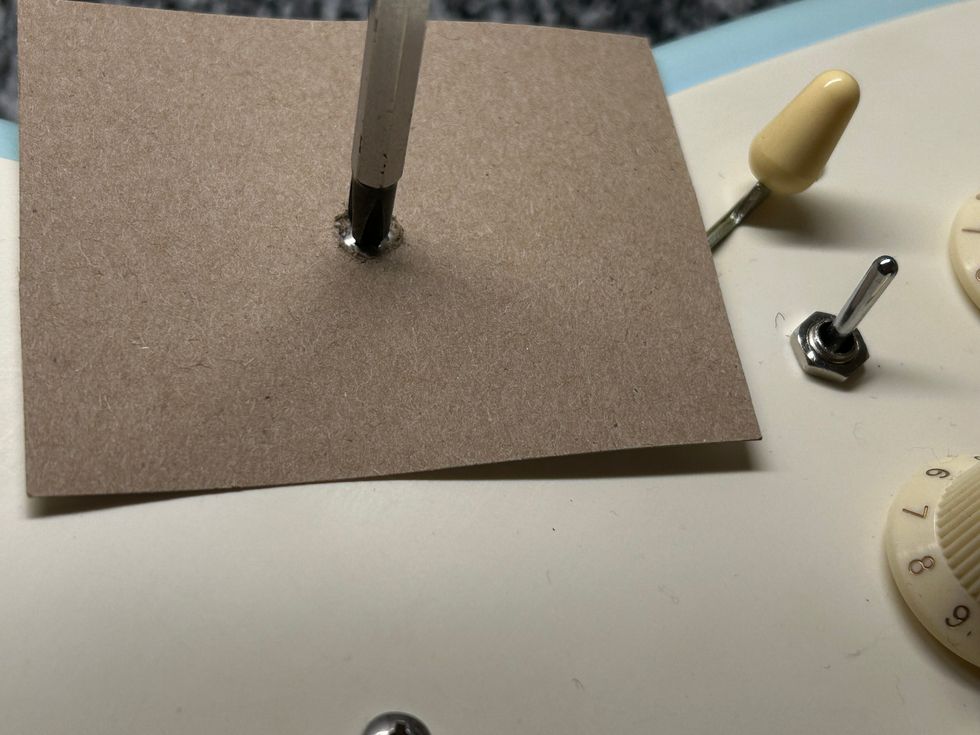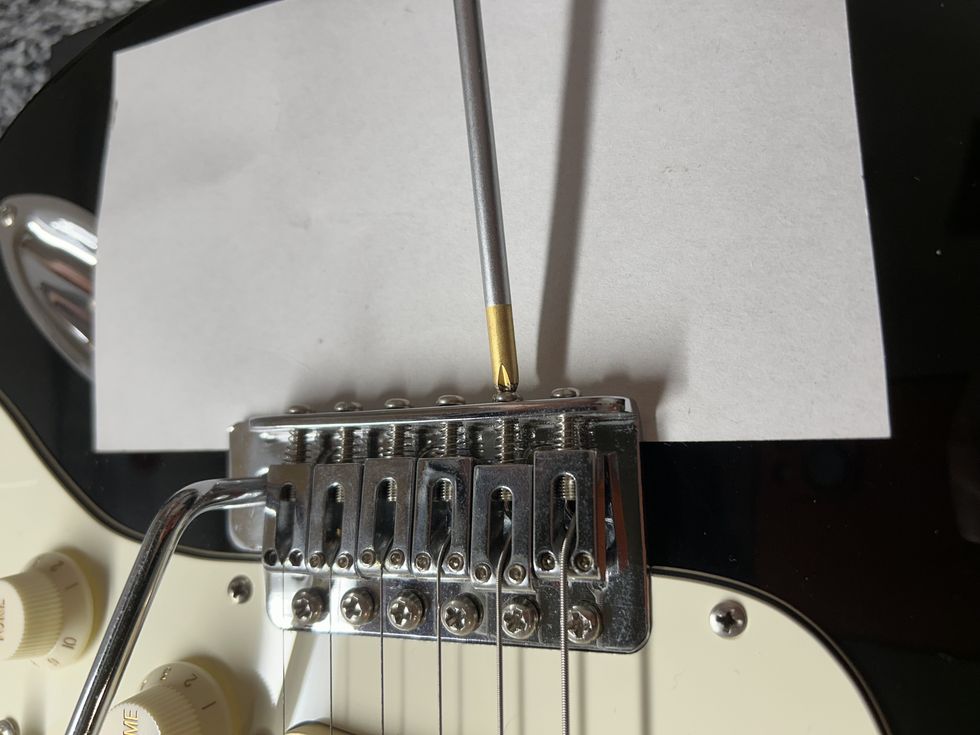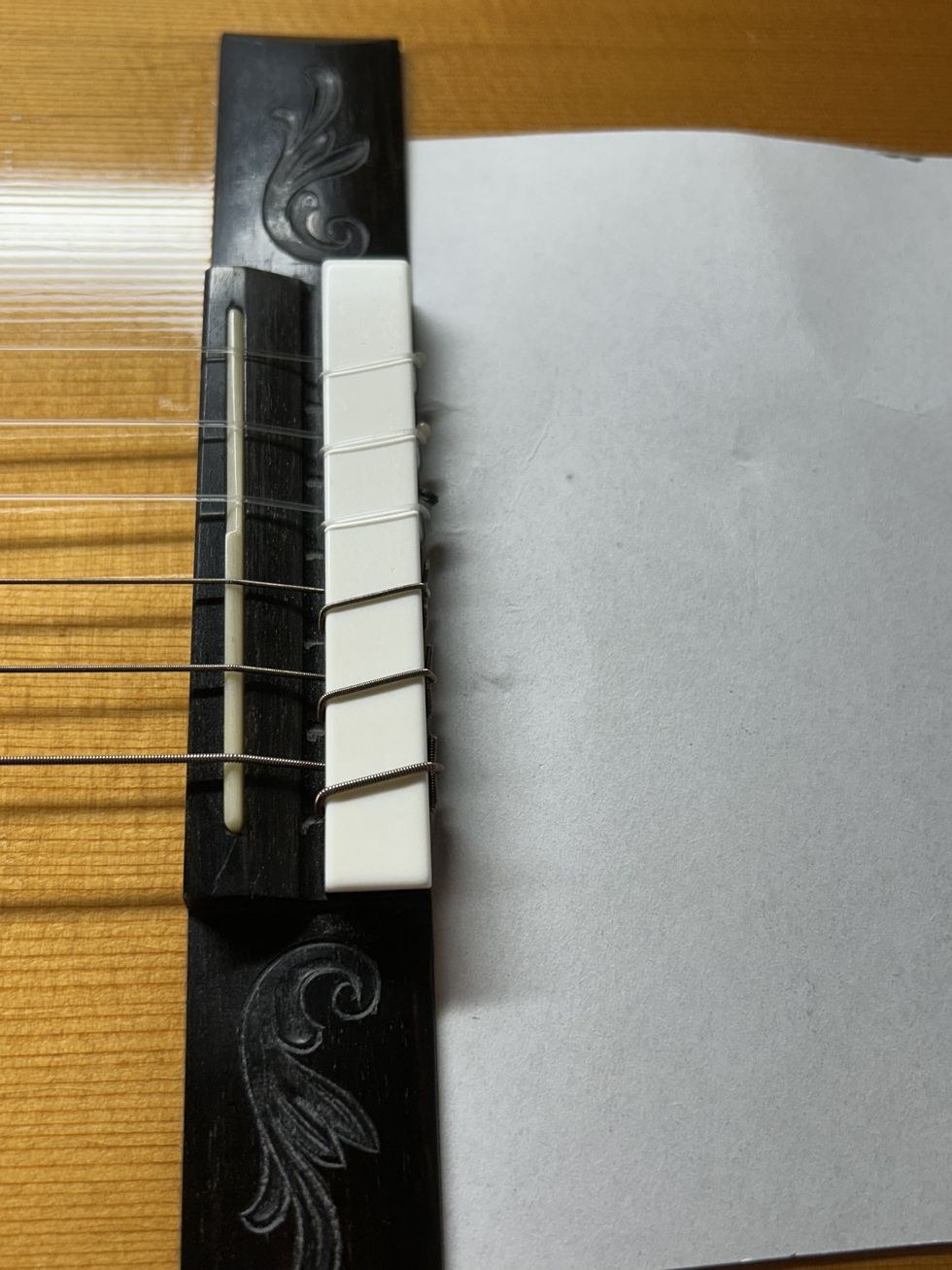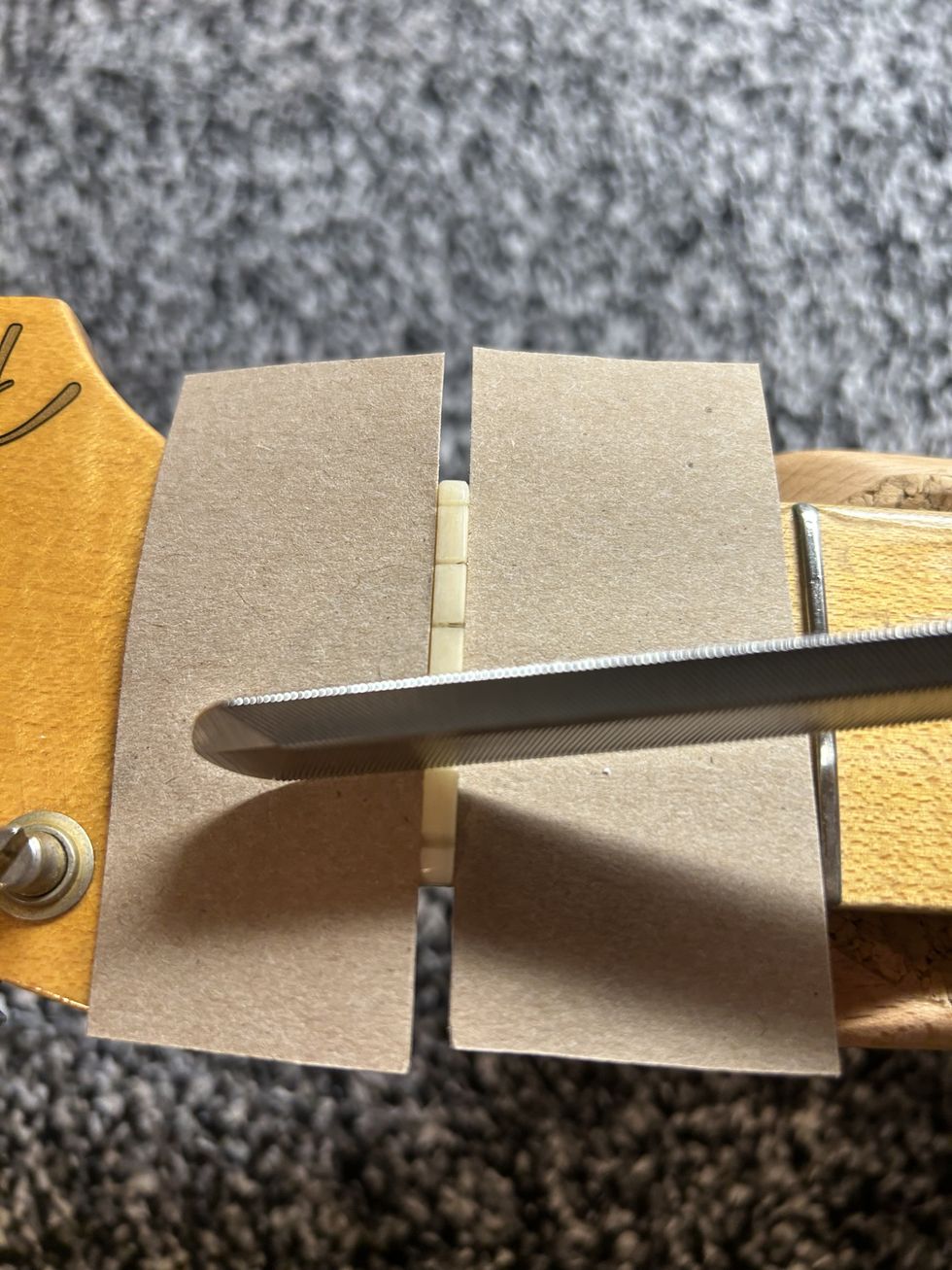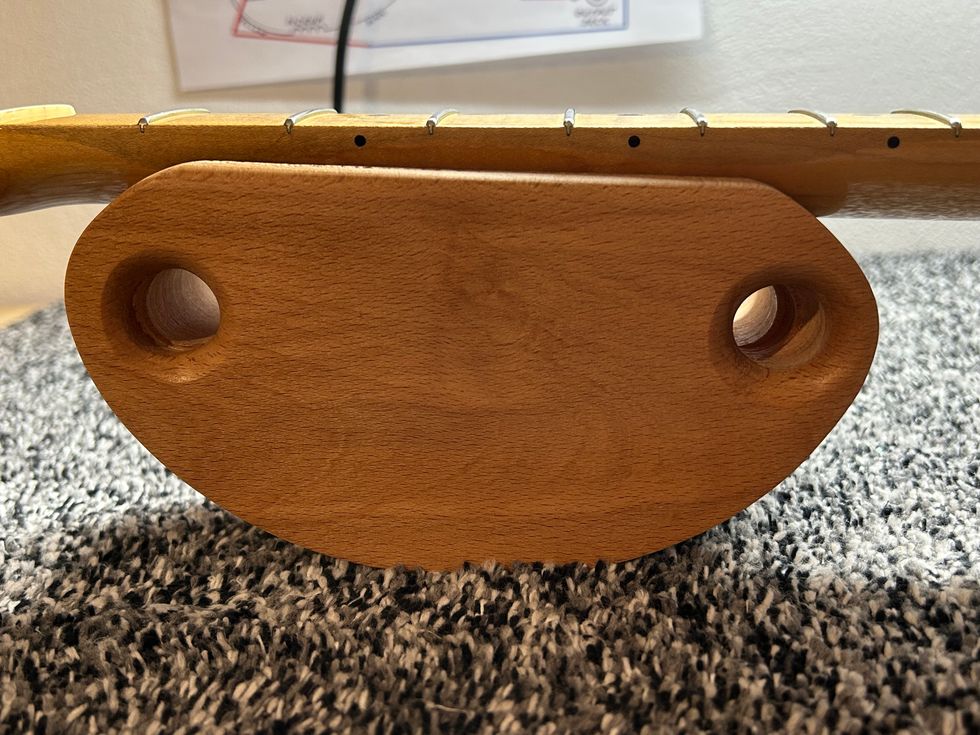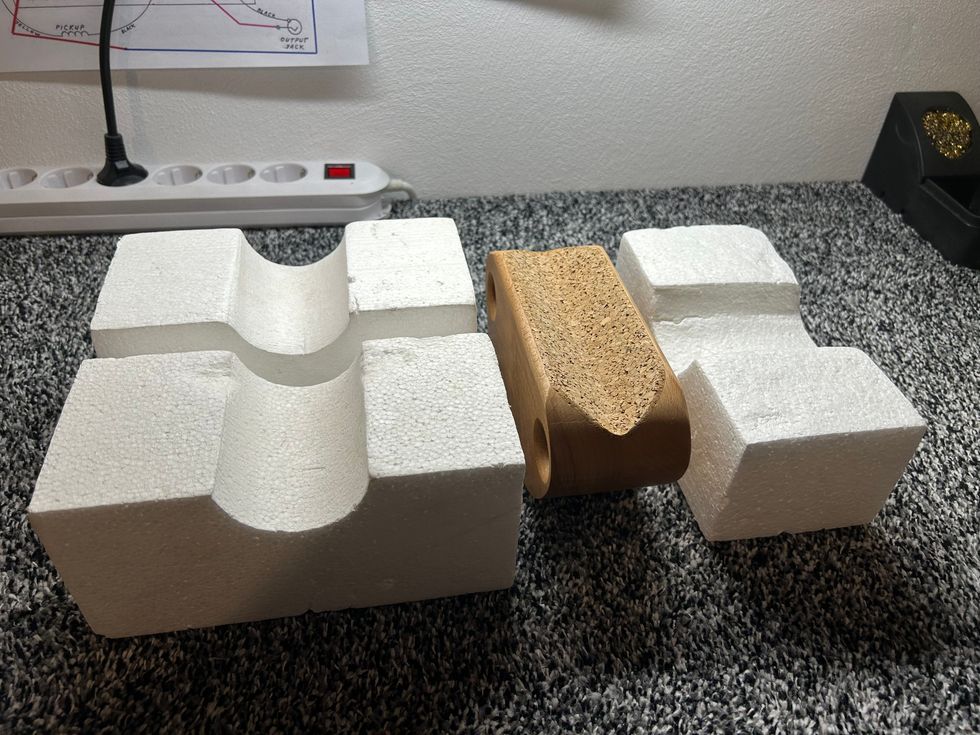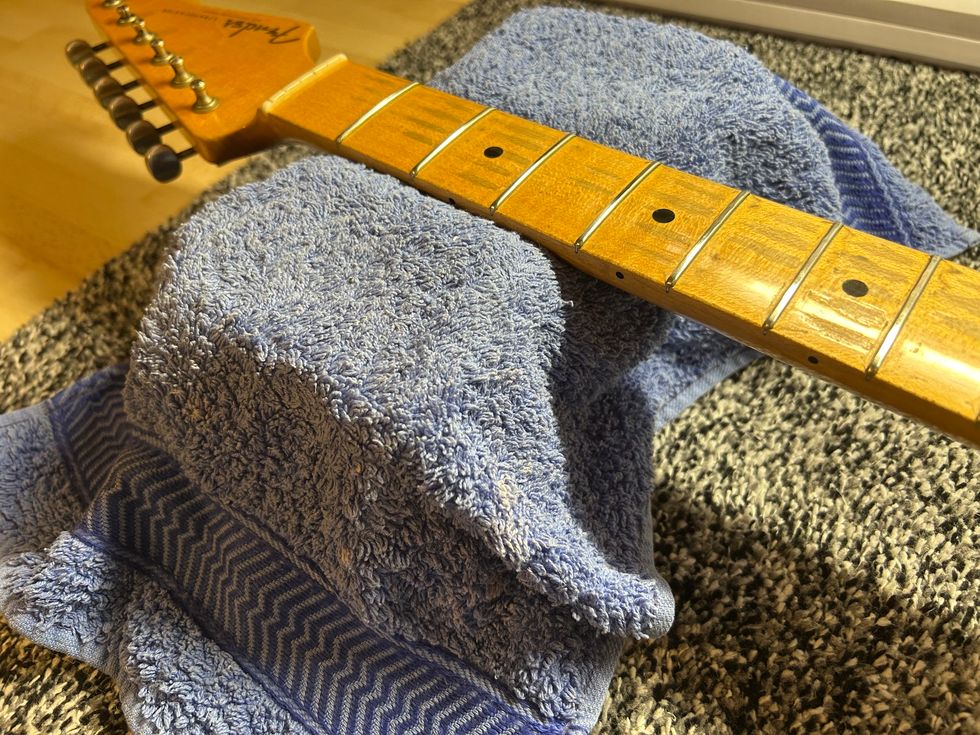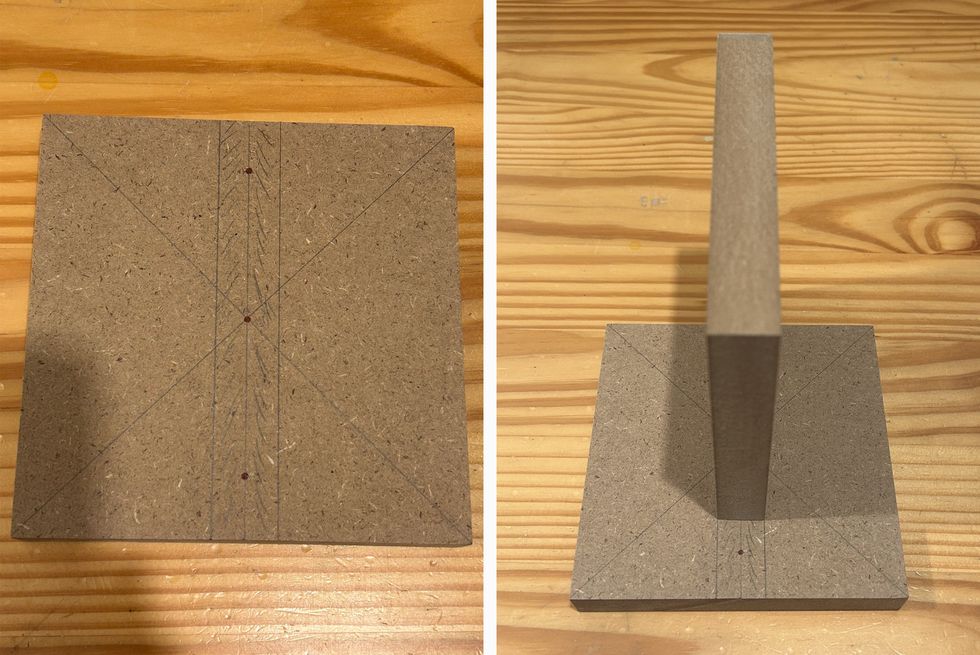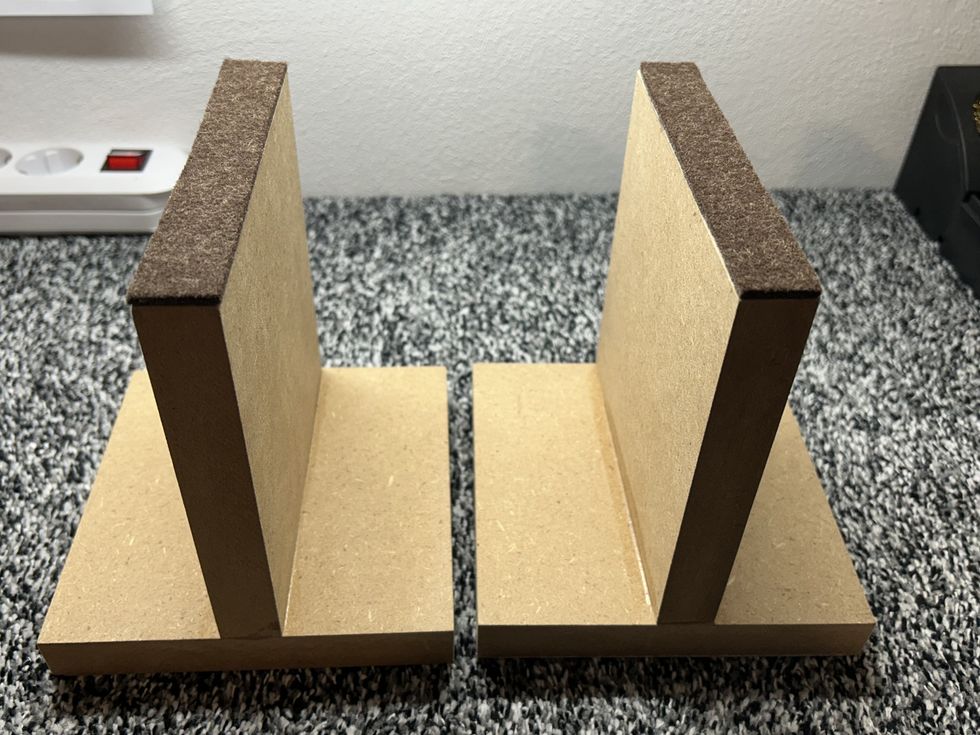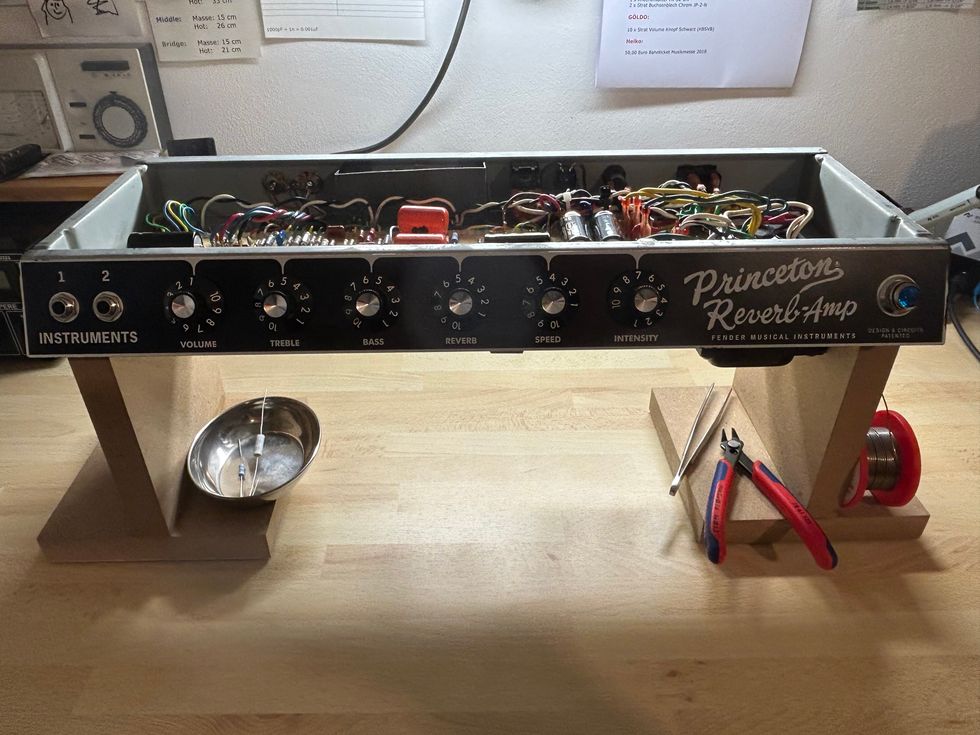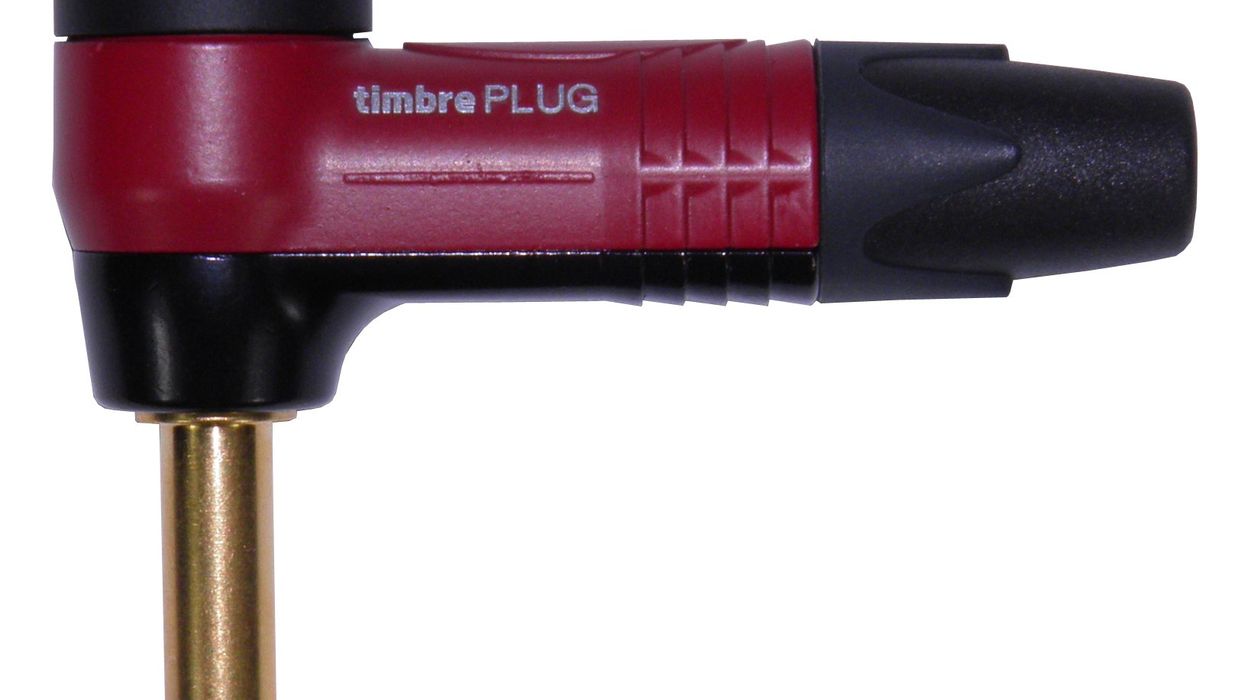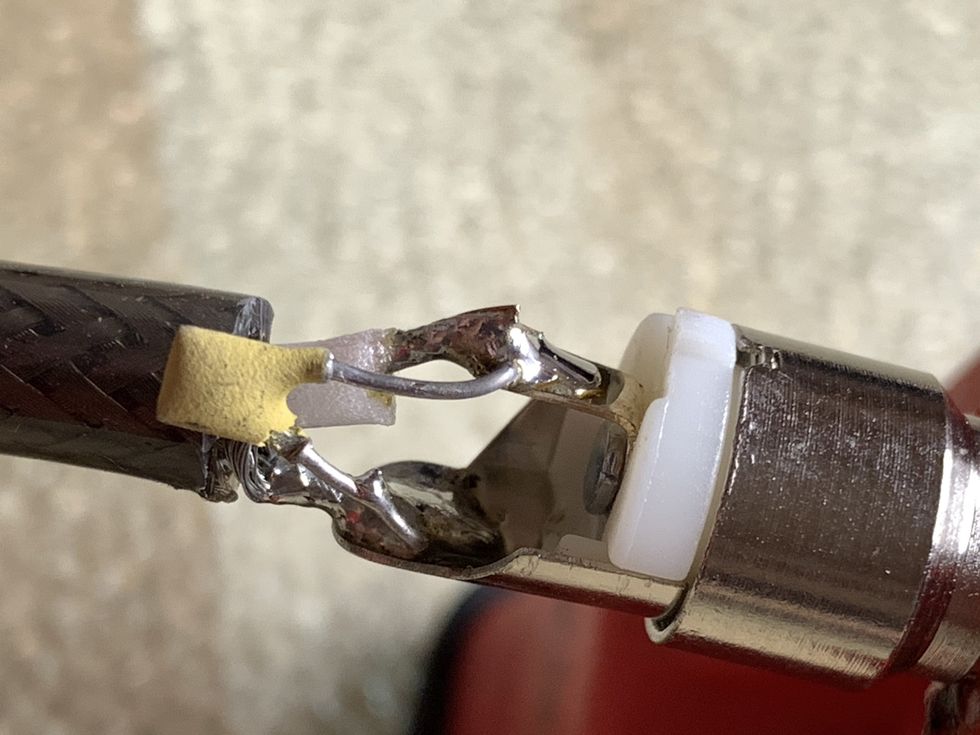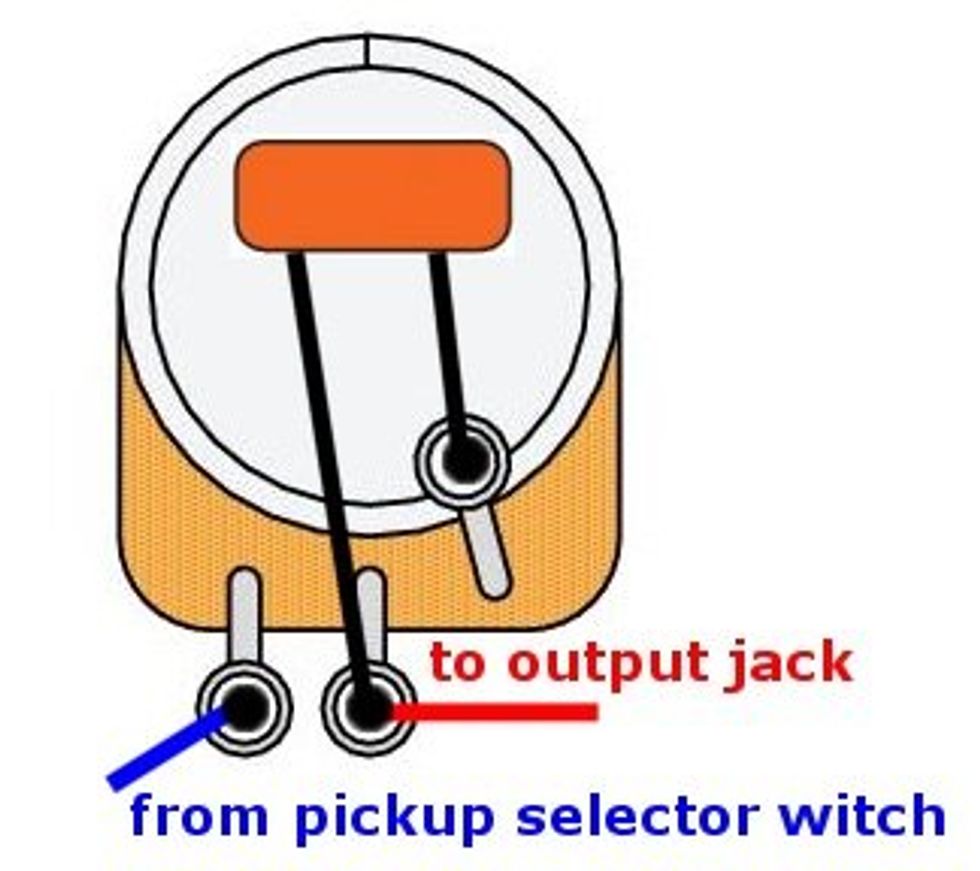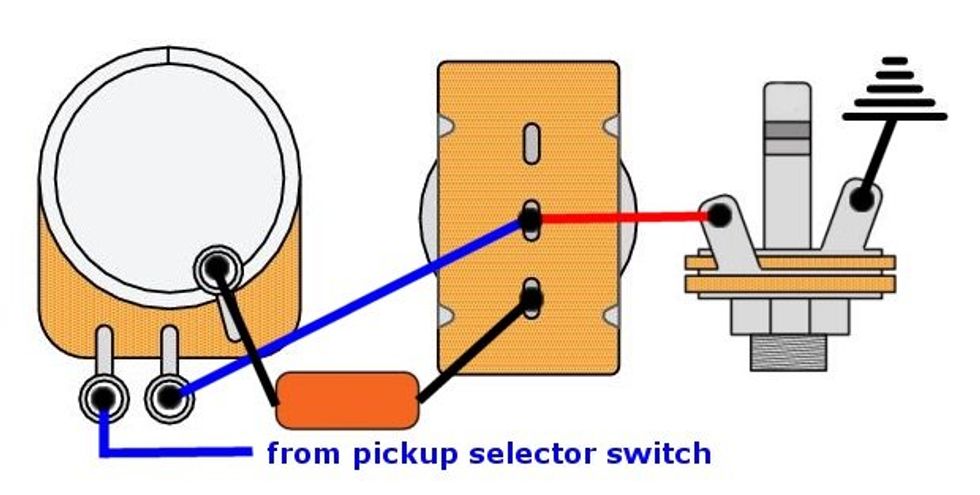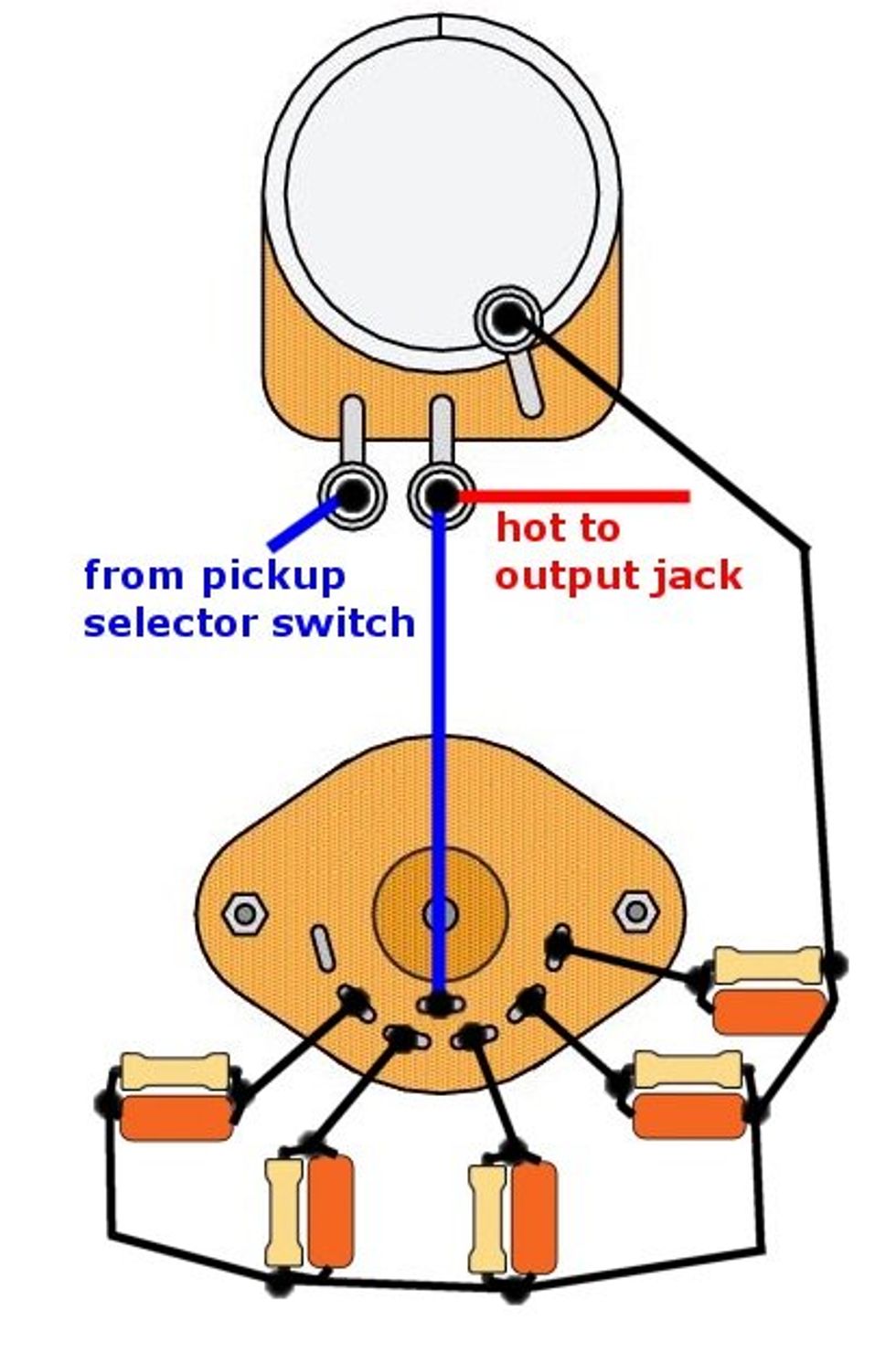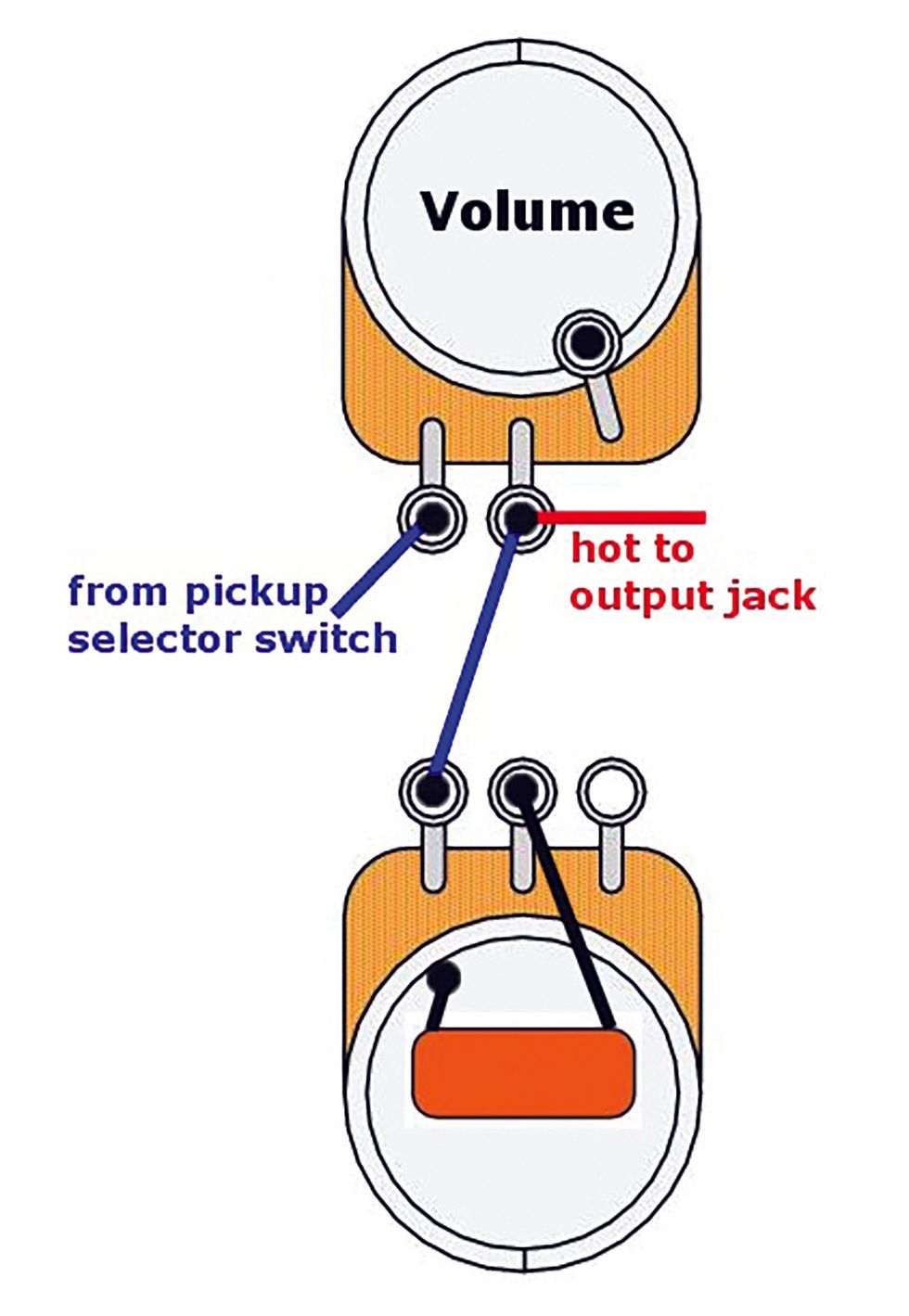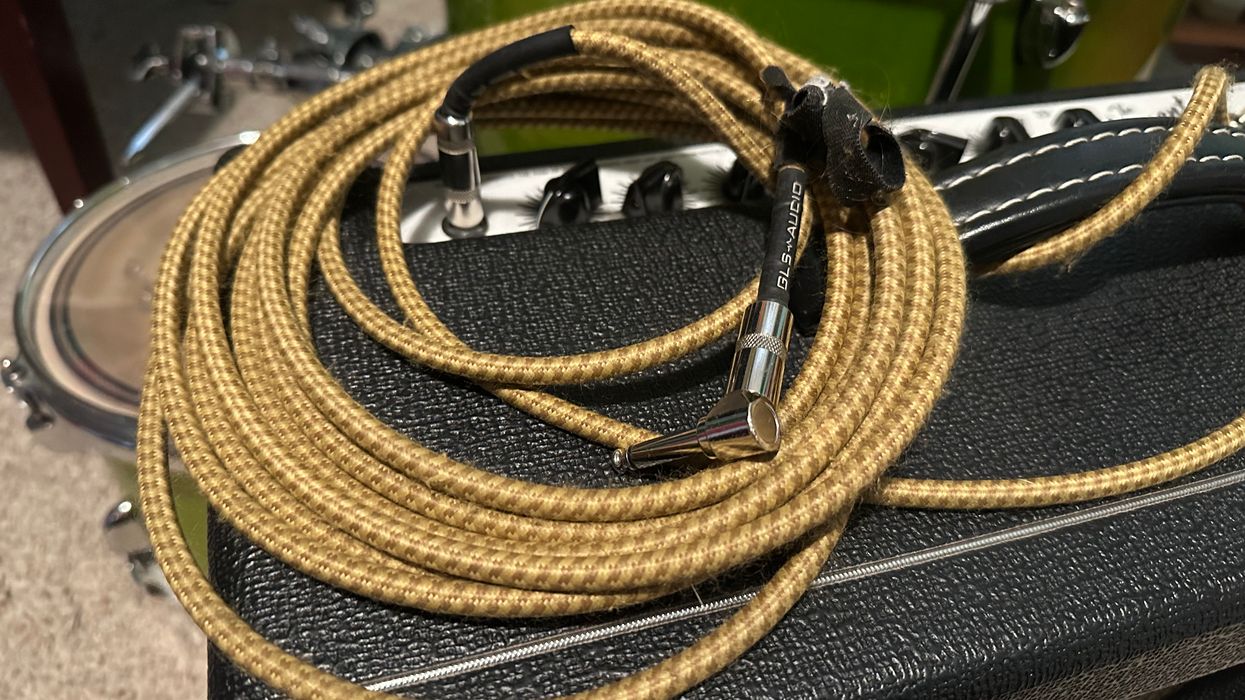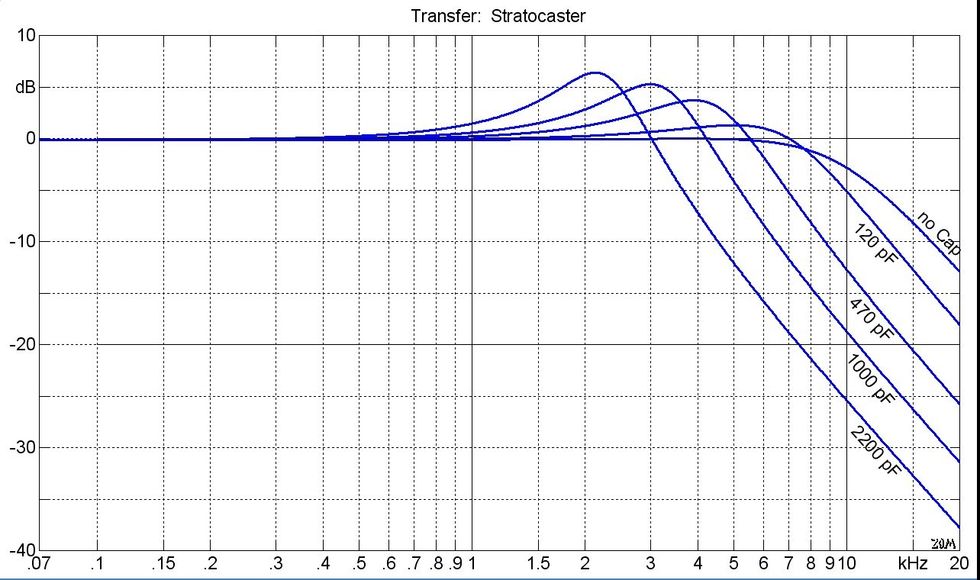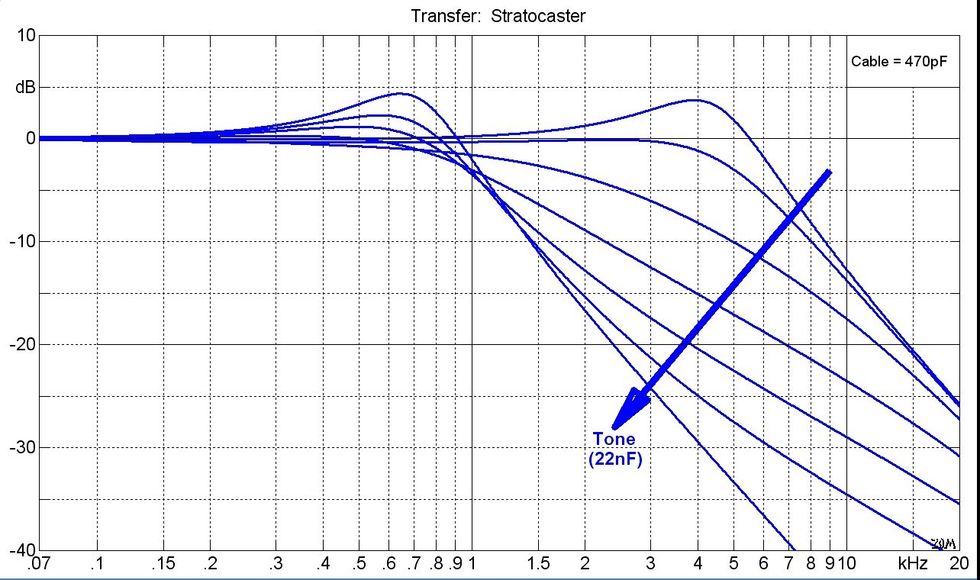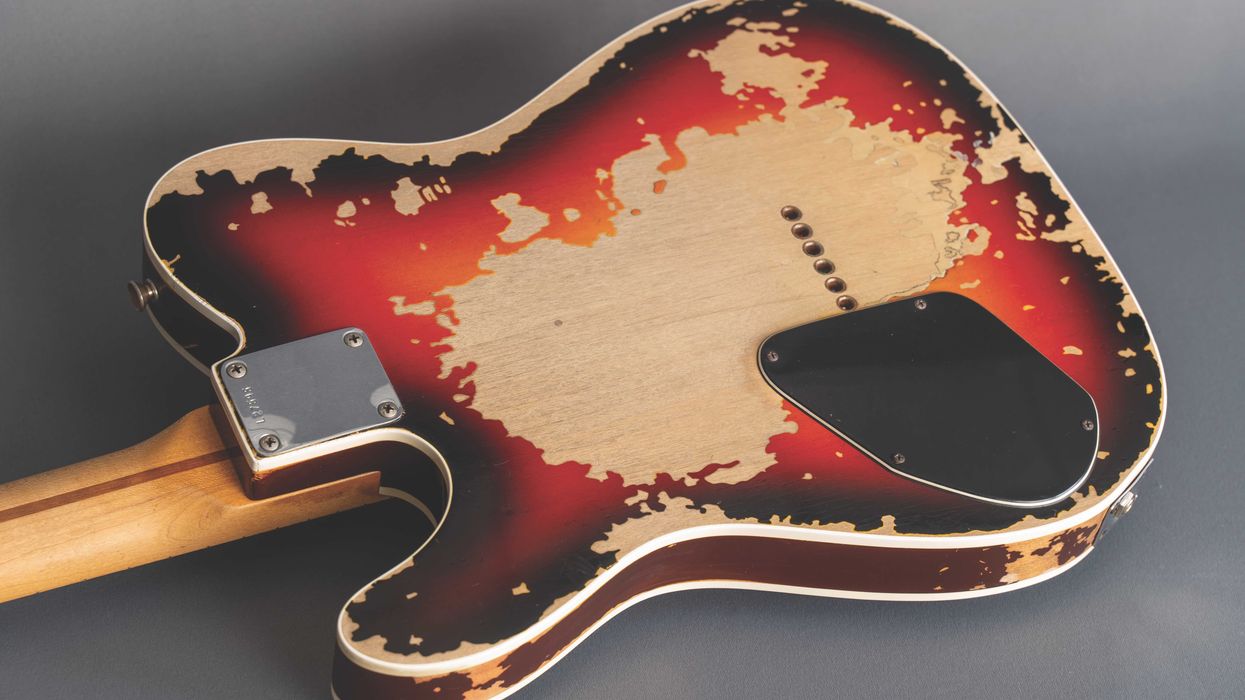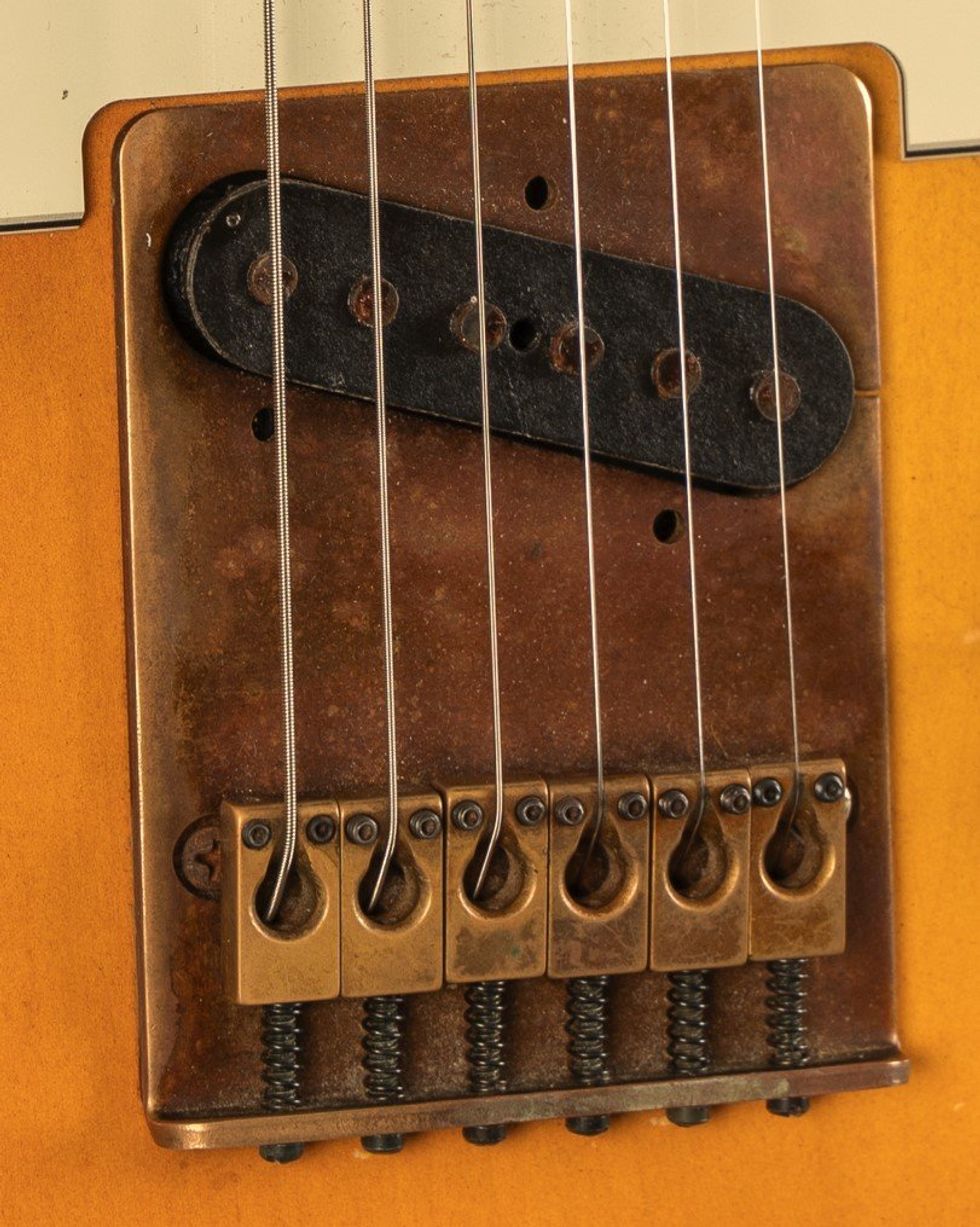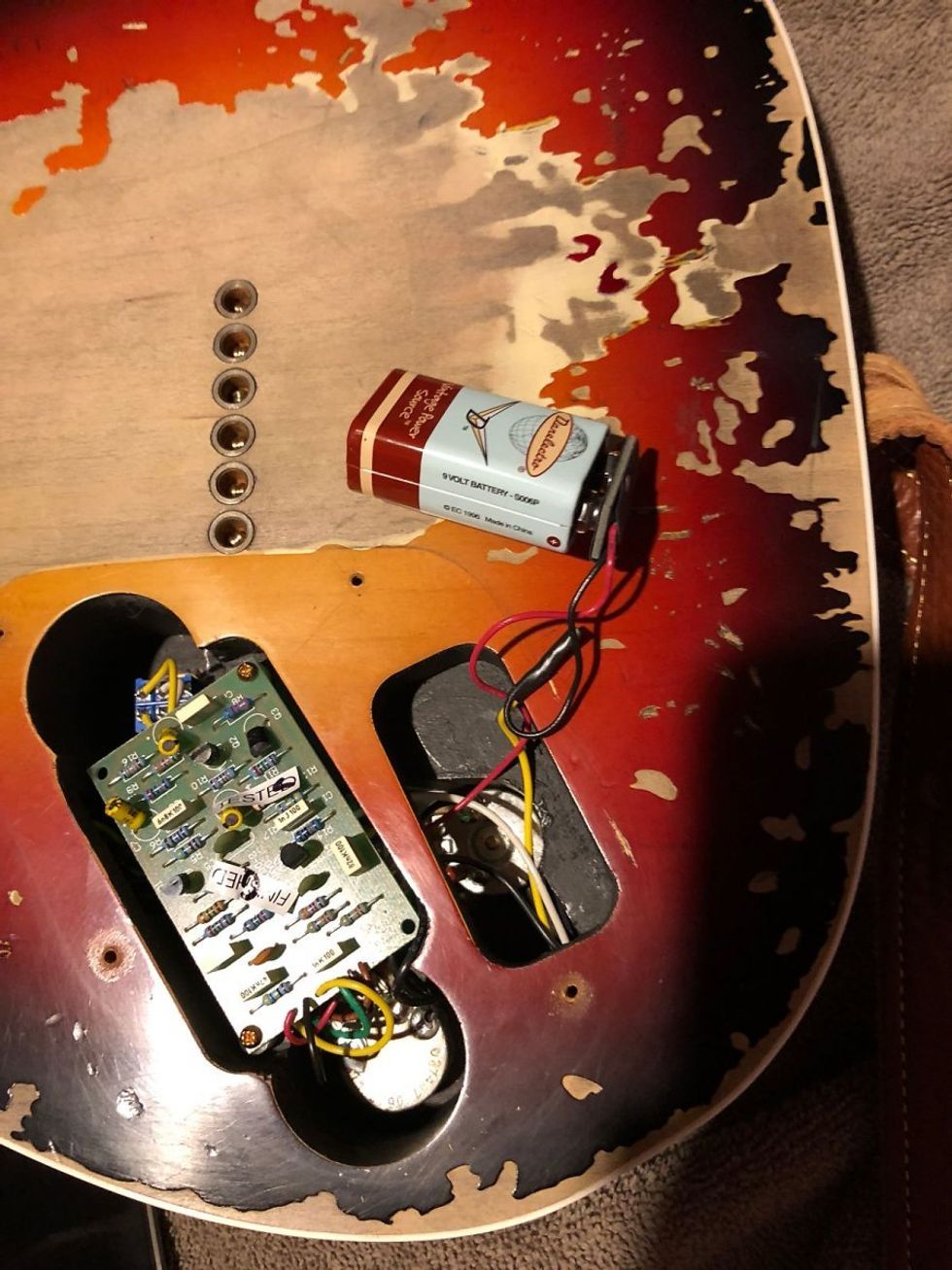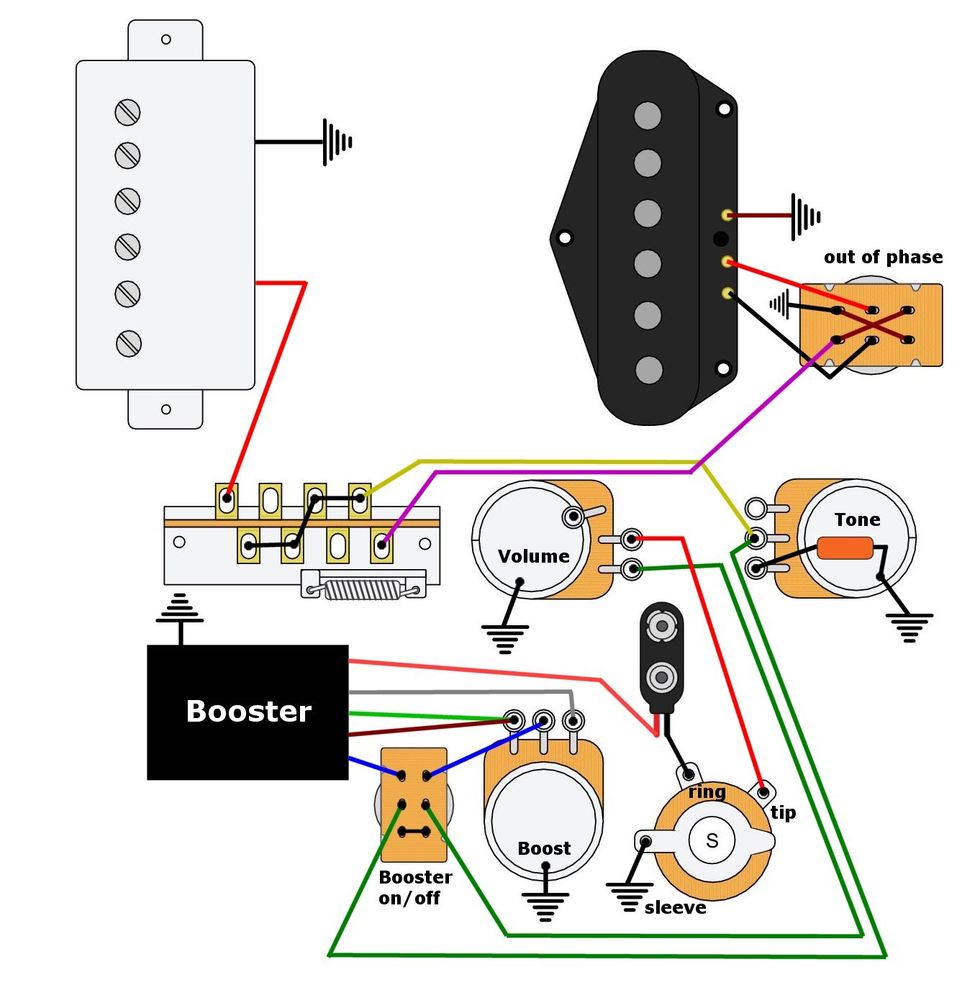I'd like to thank you for all your feedback about Mod Garage's first column on acoustic guitars (“Conquering Classical Guitar String-Changing Terror," February 2015). By popular demand, here's another acoustic-oriented column, just in time for this issue's acoustic theme. Our topic: cleaning out an acoustic guitar's interior.
Free surprise inside! When you add an old acoustic guitar to your arsenal, chances are it'll be full of dust, dirt, and other things that have accumulated over the years, especially if the guitar was stored on a stand or wall rather than in a case. Most of this debris builds up naturally over time, but I've found the oddest things inside old guitars: picks, woodchips, string ball-ends, pet feces, gigantic dust bunnies, toasted plant parts, a mummified mouse (former nest included), and most memorably, a very old handwritten letter folded and glued inside the soundboard.
Such debris can tell us a lot about a guitar's history, but it's not always fun removing the stuff. Additionally, old acoustic guitars often smell bad inside due to a combination of old dust and moisture. But don't worry—I'll show you how to clean things up in a few simple steps.
My procedure isn't the only possible method, but we've used it in our shop for many years with great results. It works equally well for steel- and nylon-stringed guitars, and it's dirt-cheap.
Enter the parlor. Our demo model is a MAFIMA parlor guitar built in the 1920s in Markneukirchen, Germany, which a customer brought in for a full restoration. (MAFIMA was the brand of luthier Max Fischer, derived from the words “MAx FIscher MArkneukirchen.") Our customer bought it at a flea market without a case. It was in surprisingly good shape for its age, but it was full of dust and dirt, and inside it smelled like an old museum hall with a waxed floor that hadn't been cleaned for decades—not very appealing.
The first step is easy: Remove the strings, turn the guitar upside down with the soundhole facing the ground, and shake for several minutes until any large, loose debris falls out. It's a good idea to do this outside—you may be surprised by the amount of debris you encounter!
Photo 2. Image courtesy of singlecoil.com.
Next, grab your vacuum and a duster. You can also use any piece of cotton cloth or an old, clean sock. Disconnect any attachments from the vacuum's hose, and then wrap the duster or cotton cloth around the end of the hose, securing it with a rubber band (Photo 1). Turn on the vacuum, put the hose inside the guitar, and hoover everything up (Photo 2). The duster protects the inside of your guitar from damage.
Photo 3. Image courtesy of singlecoil.com.
Those hard-to-reach places. Now use a small extension vacuum hose like the one shown in Photo 3. You can buy these for a few bucks at most home improvement and computer stores. (To prevent damage, I only use the kit's small, soft hose.) With this neat little toy you can vacuum all the spots inside the guitar that your standard vacuum hose can't reach.
By now most of the dust and dirt should be gone, but the next two steps should get everything out. The idea is to loosen the rest of the dirt with shots of high-pressure air, and then suck it up as it's flying around with the vacuum hose. We have an air compressor at the shop, but you can use a can of compressed air that's sold to blow dust out of computer keyboards.
Photo 4. Image courtesy of singlecoil.com.
Return to your vacuum's standard-sized hose and remove the duster. Power up your vacuum to full throttle—yeah. Insert the hose into the soundhole and simultaneously blow into the body towards its lower end (Photo 4). If your guitar has an endpin hole, make sure to seal it temporarily so no pressure escapes. Don't overdo it—too much air pressure can damage loose braces. Repeat several times and don't inhale when your mouth is near the soundhole! It's also a good idea to wear goggles.
Alternatively, you can use a hairdryer at its highest speed, but only with unheated air. (Never blow hot air into an old acoustic guitar. The aged glue can soften, and you don't want braces falling from the soundboard.)
Photo 5. Image courtesy of singlecoil.com.
The rice stuff. Our last step is the funniest one. You need two things: a piece of cardboard, plastic, or wood veneer to cover the soundhole, and a package of rice (Photo 5). Use the cheapest big package of rice you can find. Pour the rice into the soundhole. (Don't insert the packaging!) Cover the soundhole and shake the devil out of the guitar for several minutes. Remove the soundhole cover and pour the rice from the guitar into a bin. You'll probably be surprised by the grains' dirty appearance. Get a new package of rice for your next guitar. Boiling and eating used rice is not recommended.
Photo 6. Image courtesy of singlecoil.com.
Now if you look inside your guitar with a mirror or endoscope, you'll see a very clean guitar body (Photo 6).
I always take care with the logo sticker, assuming there's enough of it to preserve (Photo 7). Simply use a damp cotton cloth to clean the sticker, avoiding pressure. Make sure the cloth isn't too wet, or the sticker may come loose or crumble. Let it dry for some time. (You can use a sheet of blotting paper to speed up drying time.) To preserve the sticker, I apply a thin layer of clear coat or shellac with a soft brush. You can add some amber-colored stain to the lacquer so the sticker looks old.
Photo 7. Image courtesy of singlecoil.com.
This guitar stinks! Finally, let's remove that nasty smell.There are techniques galore for this, but I prefer non-chemical ones, because you never know how wood and glue will react to chemicals. One good technique is to put some fresh lavender in a thin cotton pouch and place it inside the guitar, hanging from a strand that protrudes from the soundhole for easy removal. Block the soundhole with your previously used cover, and leave the lavender inside the guitar for a few days or weeks until the bad smell has vanished. Alternatively, you can use flavored tea instead of fresh lavender—just choose an aroma you like. (One of our flamenco-playing customers does this with a flavored tea that smells like fresh espresso. He says it inspires his playing.)
That's it! Next month we'll return to electric guitar mods and discuss “The Trouble with Tribbles." Until then, keep on modding!


